Can I make the 01DEC2023 build deadline?
Part 2: 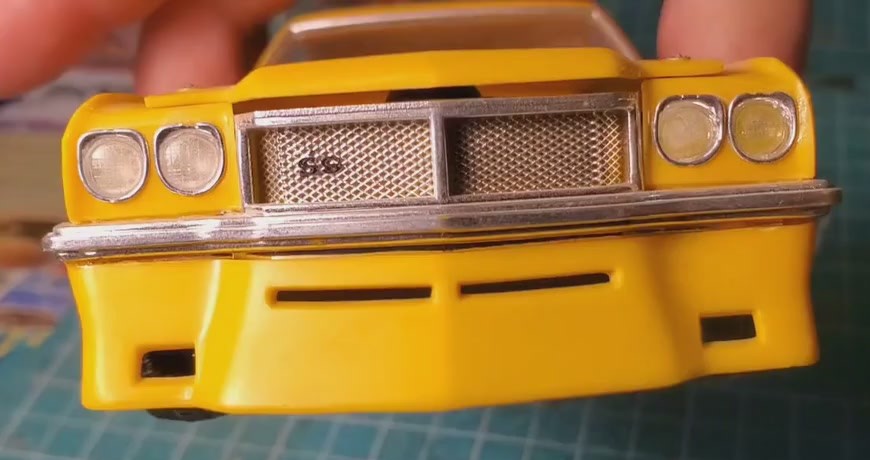 1970 CHEVY MALIBU, REVELL-MONOGRAM MERGER, WAS IT WORTH IT?
1970 CHEVY MALIBU, REVELL-MONOGRAM MERGER, WAS IT WORTH IT?
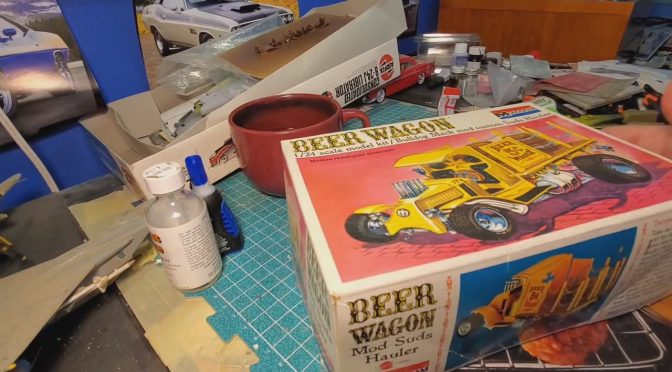
Can I make the 01DEC2023 build deadline?
Part 2:  1970 CHEVY MALIBU, REVELL-MONOGRAM MERGER, WAS IT WORTH IT?
1970 CHEVY MALIBU, REVELL-MONOGRAM MERGER, WAS IT WORTH IT?
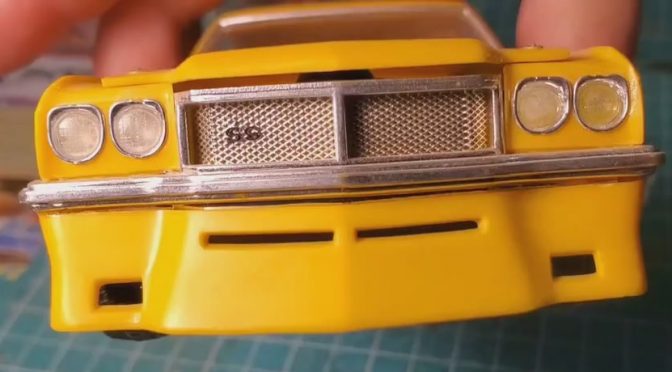
I continue my laborious ramblings about why the one time issued Monogram 1/24 scale 1970 Chevy Malibu is so significant to me.
How did I end up in Idaho, and is ‘following the jobs’ worth it?
Part 1: 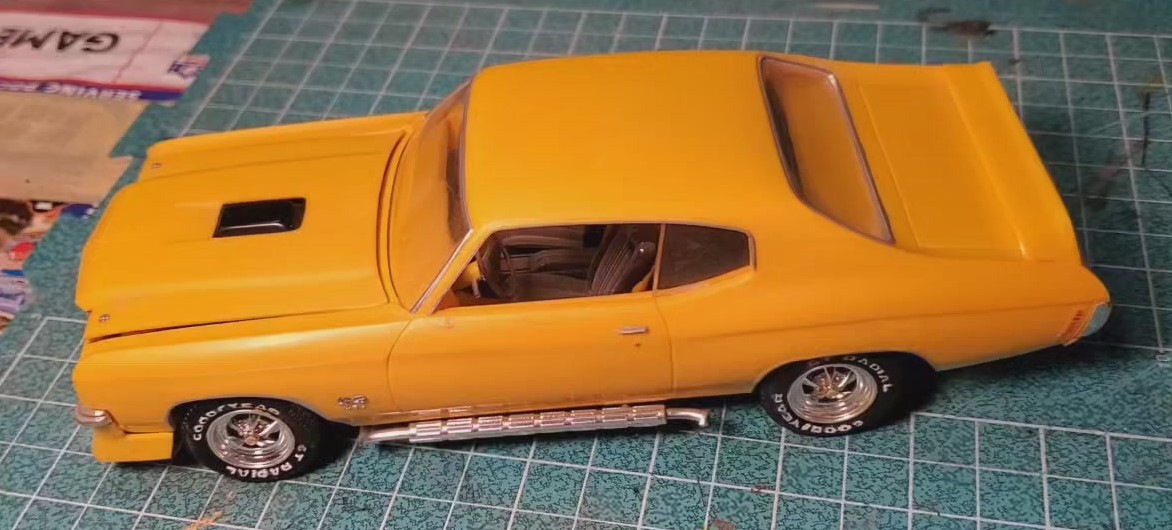 1970 CHEVY MALIBU, MY OLDEST SURVIVING CAR KIT & WHY IT’S SPECIAL TO ME
1970 CHEVY MALIBU, MY OLDEST SURVIVING CAR KIT & WHY IT’S SPECIAL TO ME
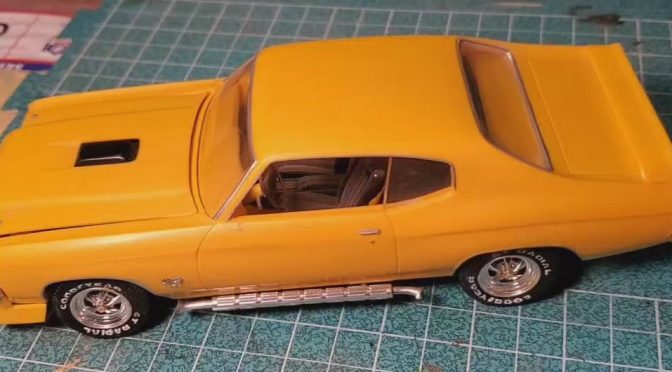
In 1982, I built this 1/24 Monogram kit as a reward for myself, for legally graduating high school at the age of 16 and being able to join the military at the age of 17, despite the fact my parents, and high school principal, said it couldn’t be done.
Kit Bashing: WHERE IS BLACKBIRD NASA 831? AND THE PROBLEMS WITH THE OLD TESTORS KIT.
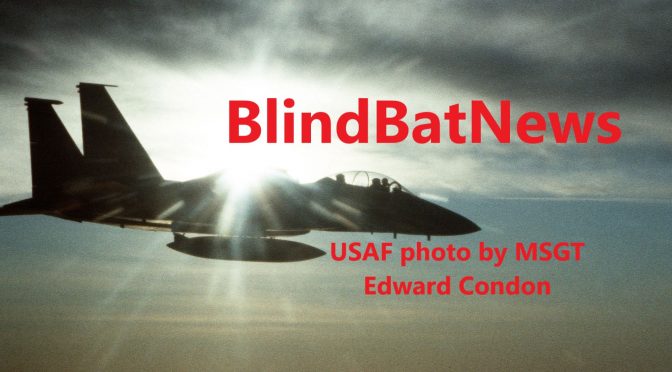
50 years of Air Superiority
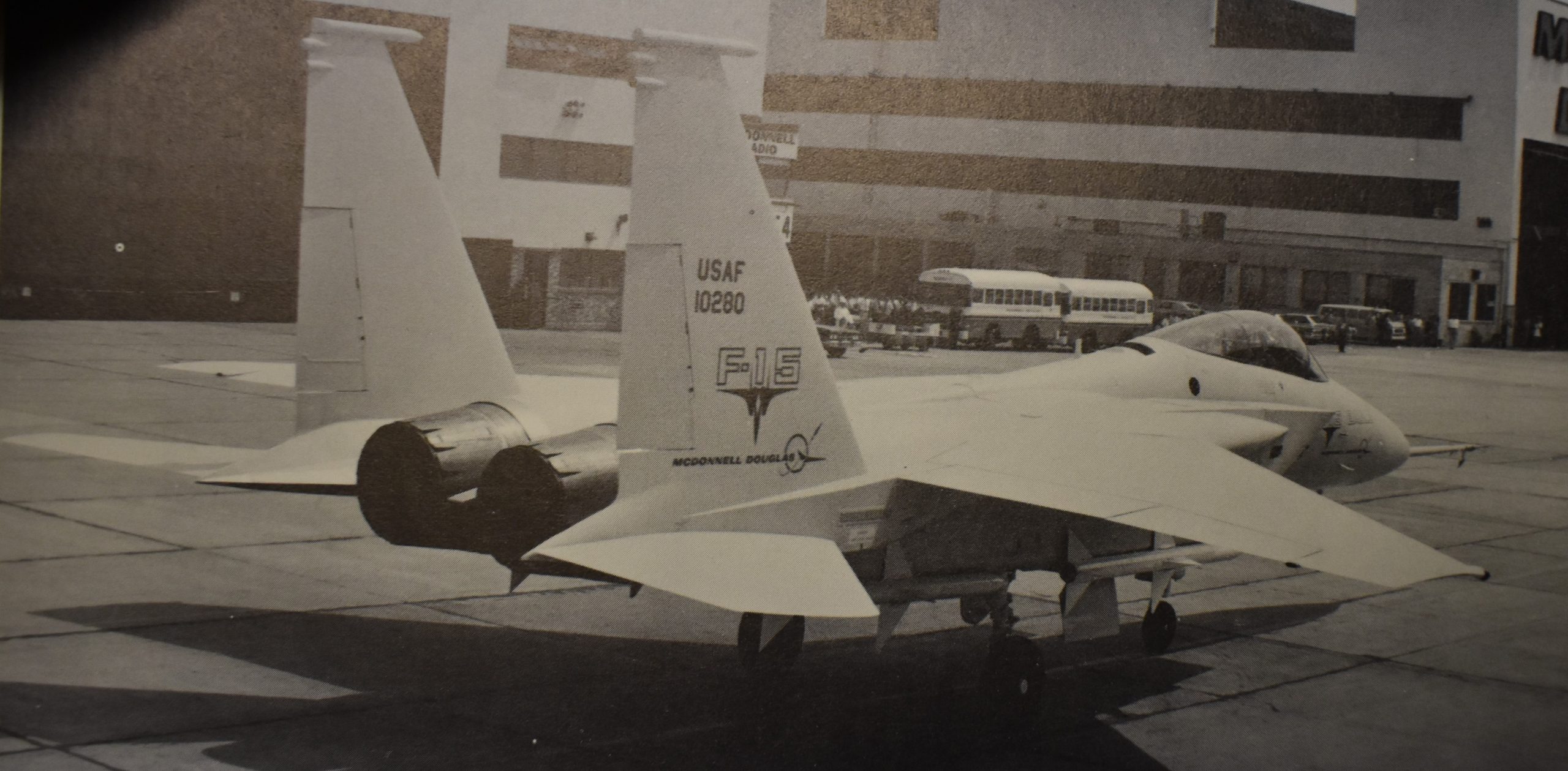
F-15A number one rolled out of the Saint Louis, Missouri, factory. Notice it does not yet have the DayGlo orange paint applied. McDonnell-Douglas photo, 26JUN1972.
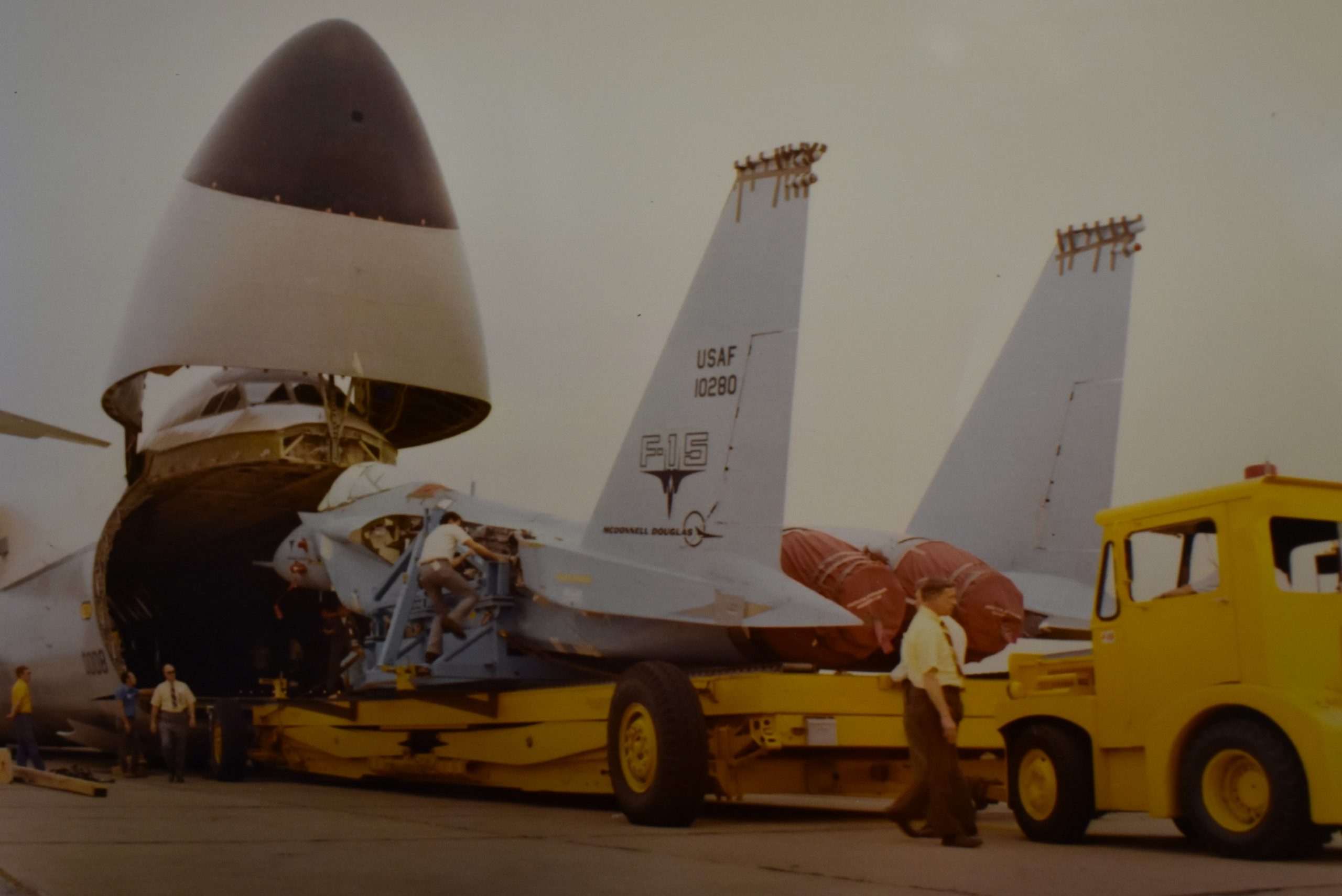
McDonnell-Douglas F-15A number one gets packed aboard a Lockheed C-5A Galaxy, for its trip to Edwards Air Force Base, California.
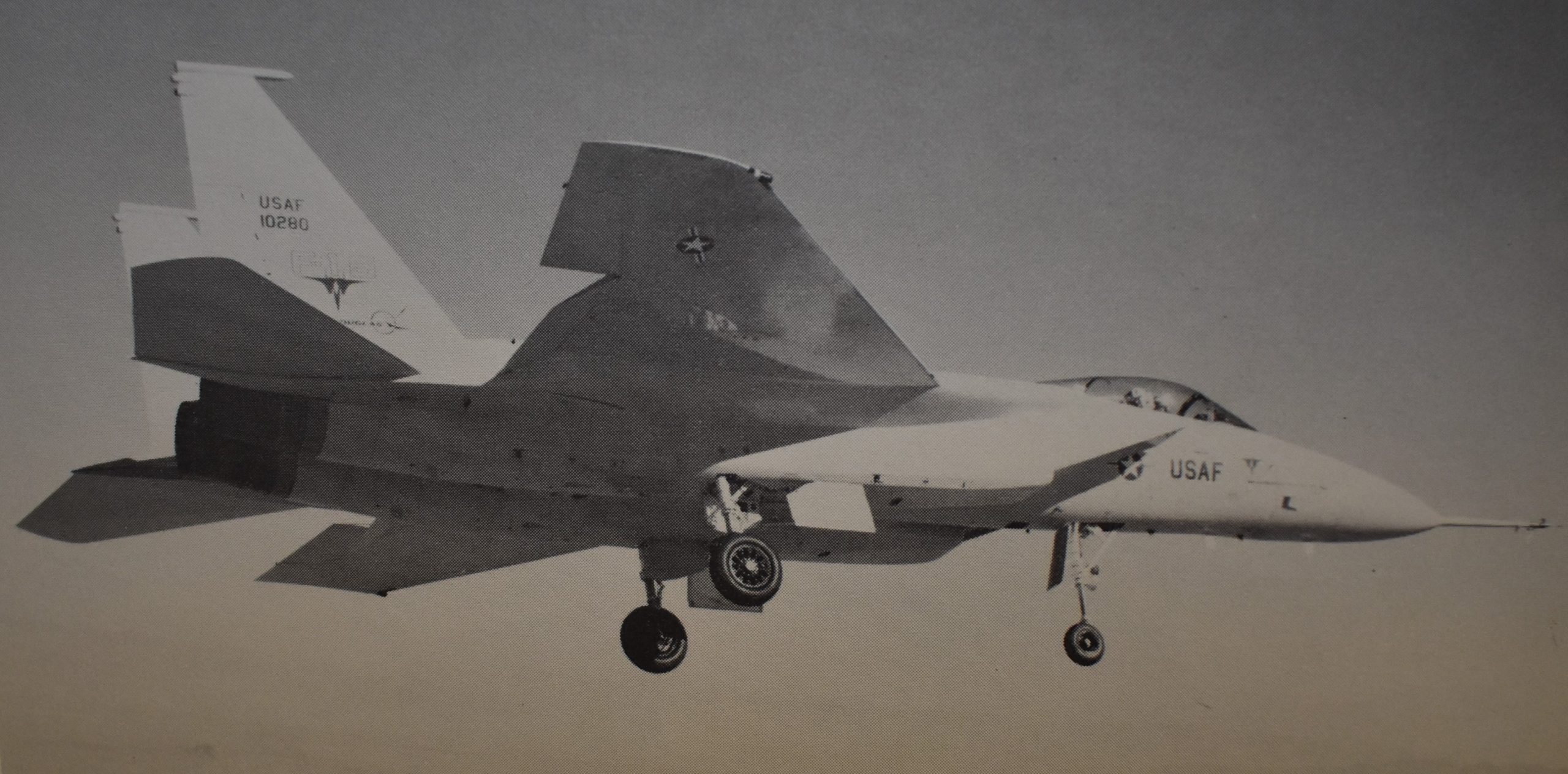
McDonnell-Douglas photo of the first flight of F-15 number one, 27JUL1972. DayGlo paint not yet applied. Notice the shape of the wings and stabilators.
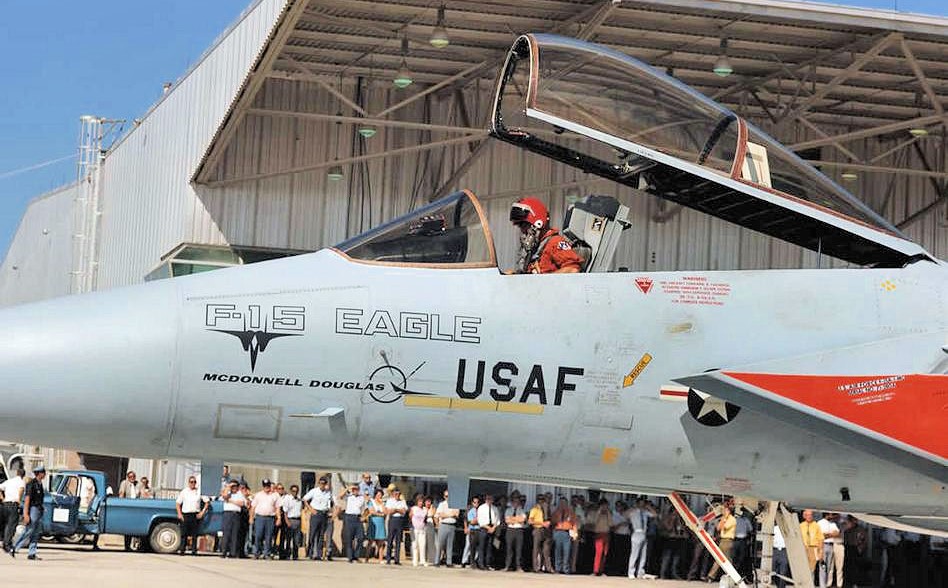
The first F-15A, #71-280, unveiled publicly after its first flight, July 1972, it now has the DayGlo paint applied. It was never called the YF-15 as several interweb sites say. From the beginning it was F-15 Eagle.
The McDonnell Douglas F-15A Eagle first took flight in 1972, beginning service in 1974. A total of 20 pre-production test and evaluation (T&E) Eagles were ordered, 12 for contactor (McDonnell-Douglas) development and eight specifically for the U.S. Air Force (USAF).
USAF promotional video, by Airman First Class Moses Taylor:
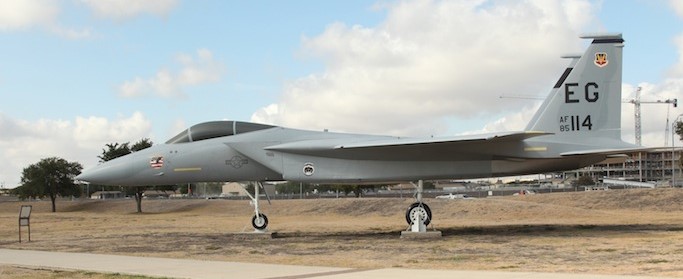
71-280 F-15A number one is now serving museum duty on Lackland AFB, Texas. However, it is painted to represent a different F-15.
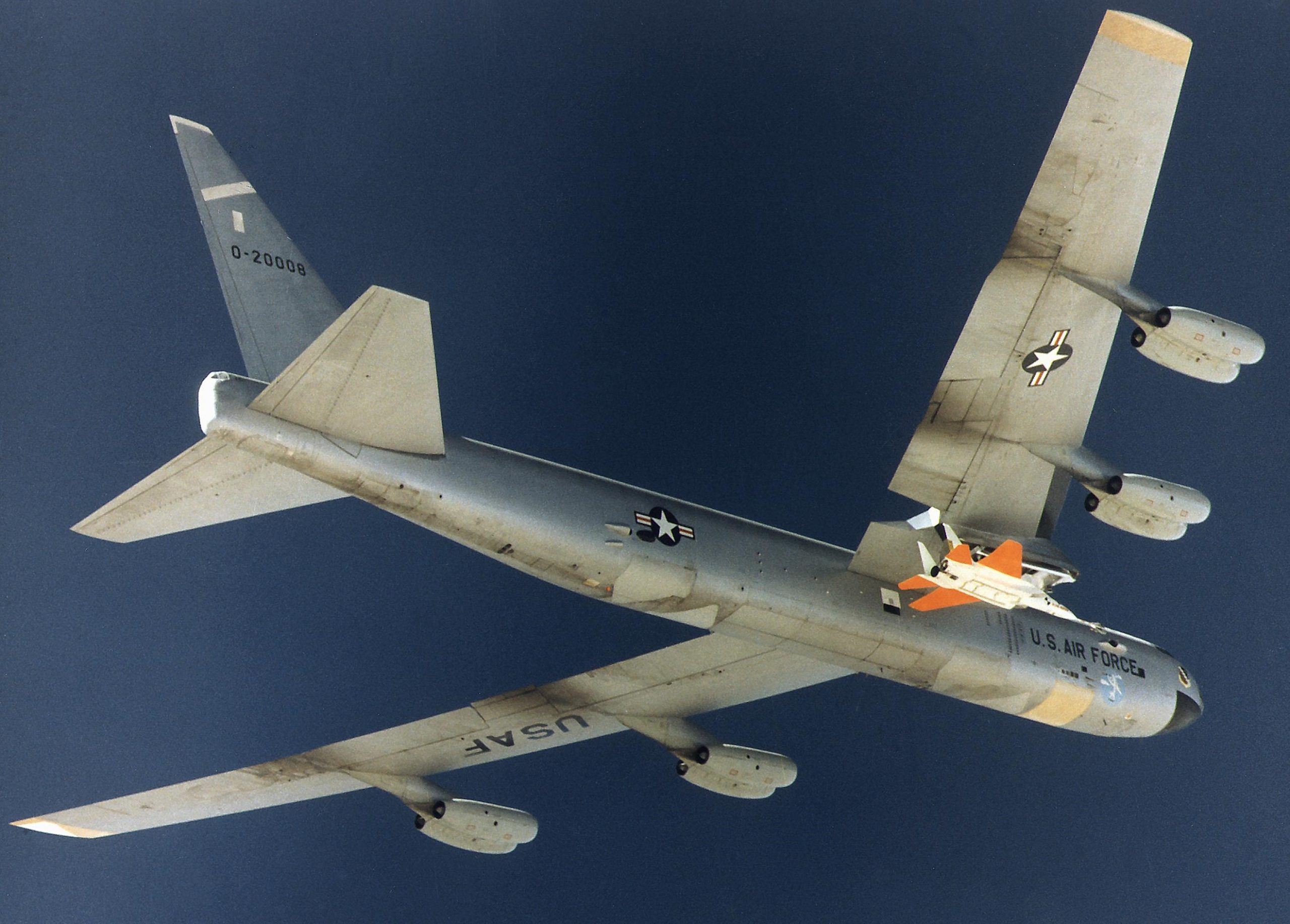
This B-52 is carrying a 3/8th-scale F-15A drone, back then called a Remotely Piloted Research Vehicle (RPRV), 23OCT1973. This was done to test the possibility of stall-spins, before the real F-15A Eagles began their test flights.
The 12 contractor F-15As were used in Category I pre-production T&E, the eight USAF F-15As were used in Category II pre-production T&E. They were never officially designated as prototypes or even called YF-15 (as some online sites say), they were officially called McAir F-1 (for the F-15A single seaters) and McAir F-2 (for the TF-15 two seaters). The Category I phase was later re-named Contractor Development, Test & Evaluation, the Category II phase was renamed Air Force Development, Test & Evaluation.
The wedge shaped F-15 engine air intake was also tested on the highly modified three engined F-106B.
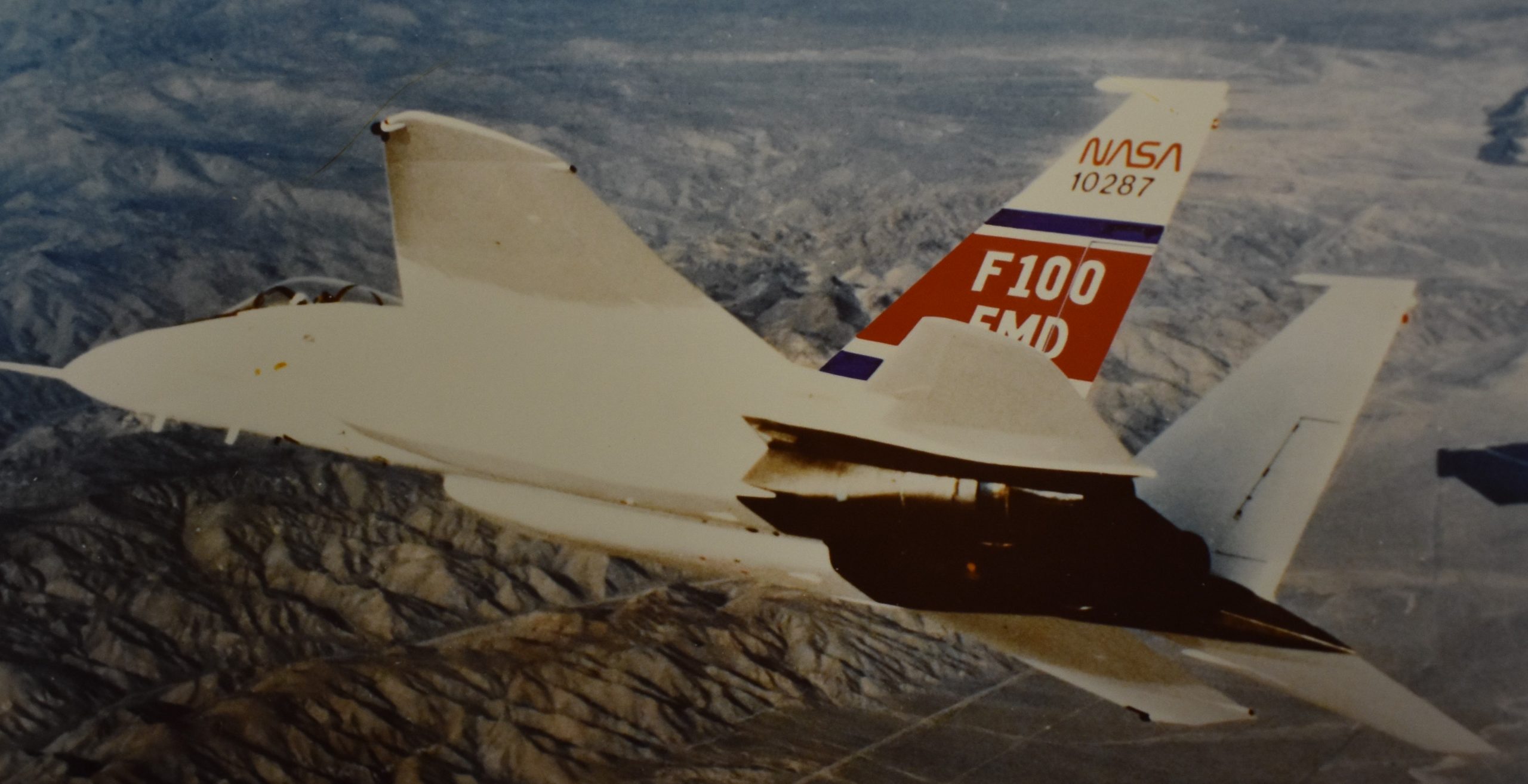
Photo via Edwards AFB photo shop. NASA’s F-15A 71-287 in 1976, testing the FMD version of Pratt & Whitney’s F-100. 287 would go on to test the HIDEC system, in the early 1990s.
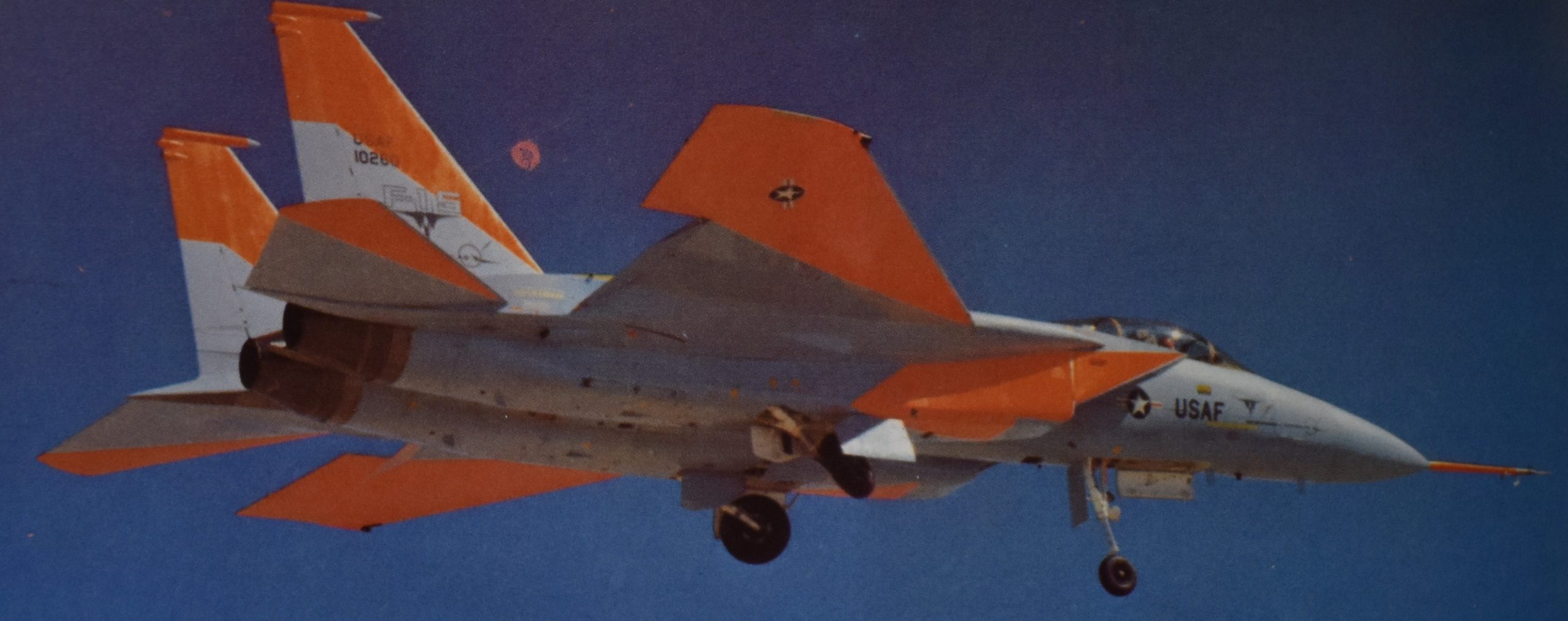
This photo shows a T&E Eagle (possibly number one) with the straight edged stabilators. McDonnell-Douglas photo.

This photo shows the smaller speed/dive brake of pre-production aircraft F-15A number five (71-284). It was apparently the first F-15 to get the 20mm Vulcan gun, obviously not at the time this photo was made (due to lack of gun port). McDonnell-Douglas photo.
The pre-production T&E Eagles can be distinguished from later production Eagles by the shape of the wing tips, the shape of the elevators (officially called ‘snag stabilators’) and the size of the speed/dive brake. T&E F-15As had squared-off wing tips, stabilators that did not have a ‘dog tooth’, and had a smaller more rectangular speed/dive brake. However, several T&E F-15 Eagles were quickly updated with the snag stabilators, yet retained the original wing tips and small speed brake.
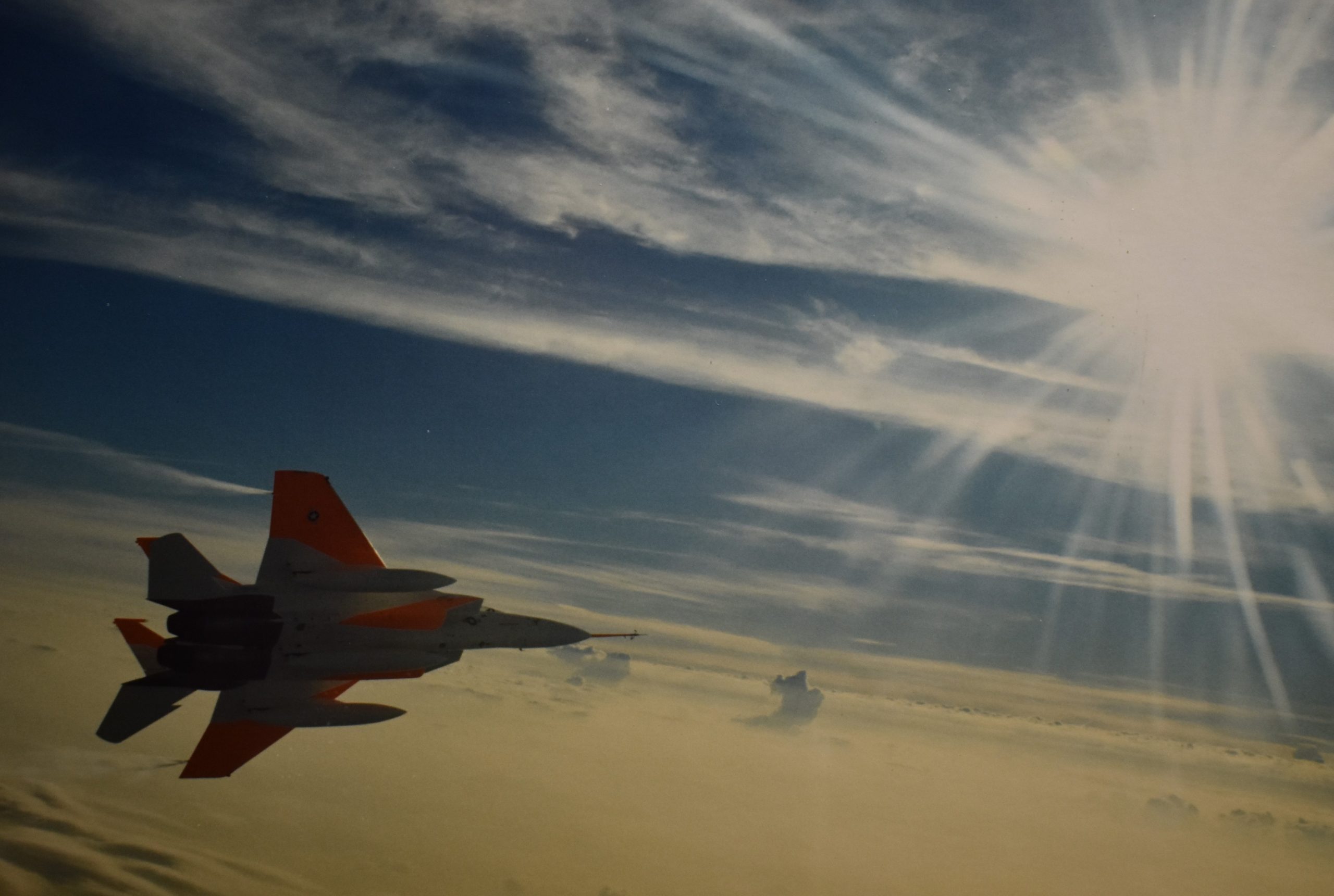
This photo shows one of the T&E Eagles updated with the snaggle toothed stabilators. USAF photo via the Edwards AFB photo shop, I got it in the mid-’70s but exact date it was made is unknown.
For kit builders, the first issue 1:72 scale Hasegawa, Revell U.S.A. and Monogram kits were based on the Category I McAir F-1 Eagles.
They were quickly revised once the final changes were established for the production F-15s.
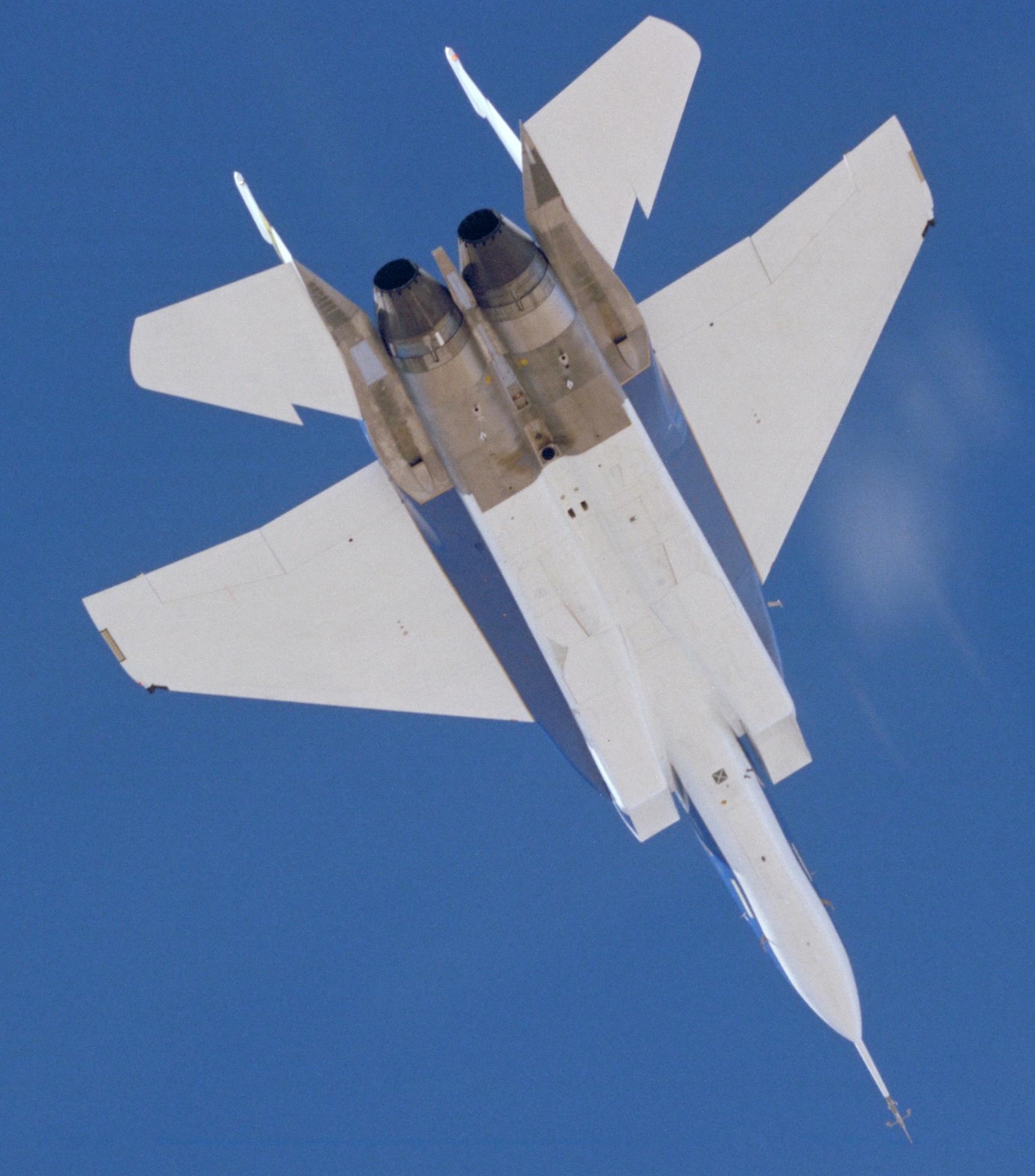
The same T&E F-15, with the squared-off wing tips, but it has been updated with the dog-tooth elevators. NASA photo, 24FEB1978.
Development of the F-15A actually started in the late 1960s, it was designed as a pure dog-fighter, intended to replace the F-4 Phantom-2 in that role. The design was based on U.S. air combat experience over Viet Nam, and on incorrect assumptions about Soviet fighter development, especially the MiG-25 Foxbat.
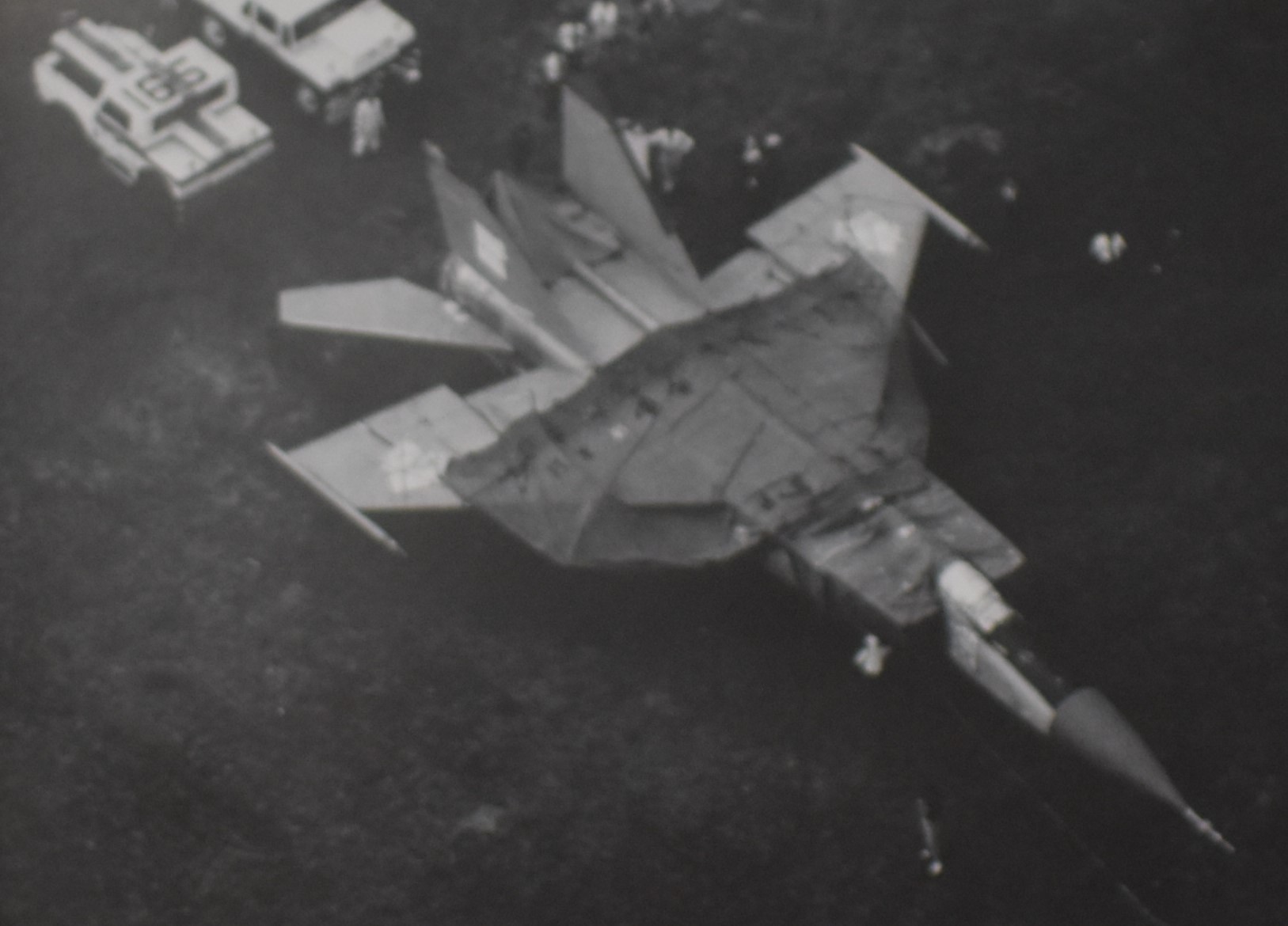
The defected MiG 25P. This is the photo that inspired the artwork on Minicraft/Hasegawa’s black bordered box issue of their MiG 25 kit, in the late-1970s.
Before the defection of a Soviet pilot in a MiG-25P, to Japan in 1976, the ‘experts’ in the U.S. Department of Defense thought the Foxbat was a dog-fighter. The MiG-25 was actually a straight line Mach 3 bomber interceptor, it carried four long range anti-bomber missiles, and had no guns. Fortunately, the incorrect assumptions resulted in a still potent modern day dog-fighter (proven by the Israeli Air Force) that has also proved it excels at other forms of aerial combat.
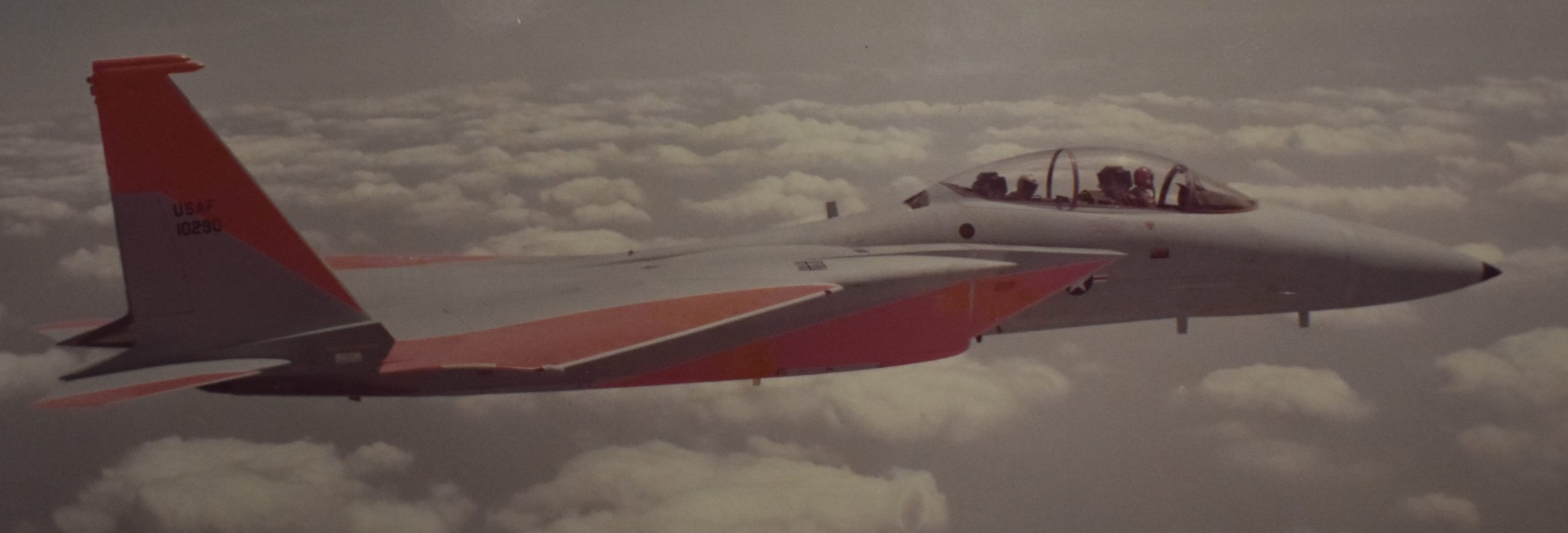
TF-15A #71-290. Photo via the Edwards AFB photo shop. 290’s final mission would be as the NF-15B ACTIVE in the late 1990s.
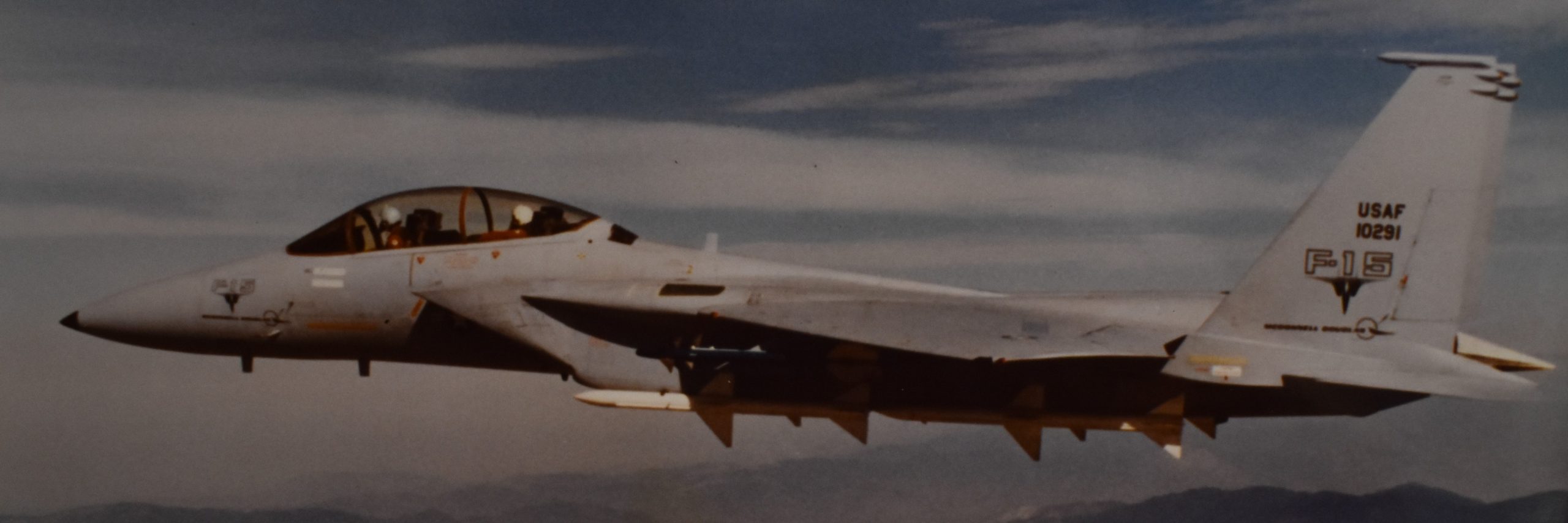
I got this photo from the Edwards AFB photo shop in the mid-1970s. It is TF-15A/F-15B 71-291, which would go on to become the ‘demonstrator’ (mock-up) of the F-15E concept.
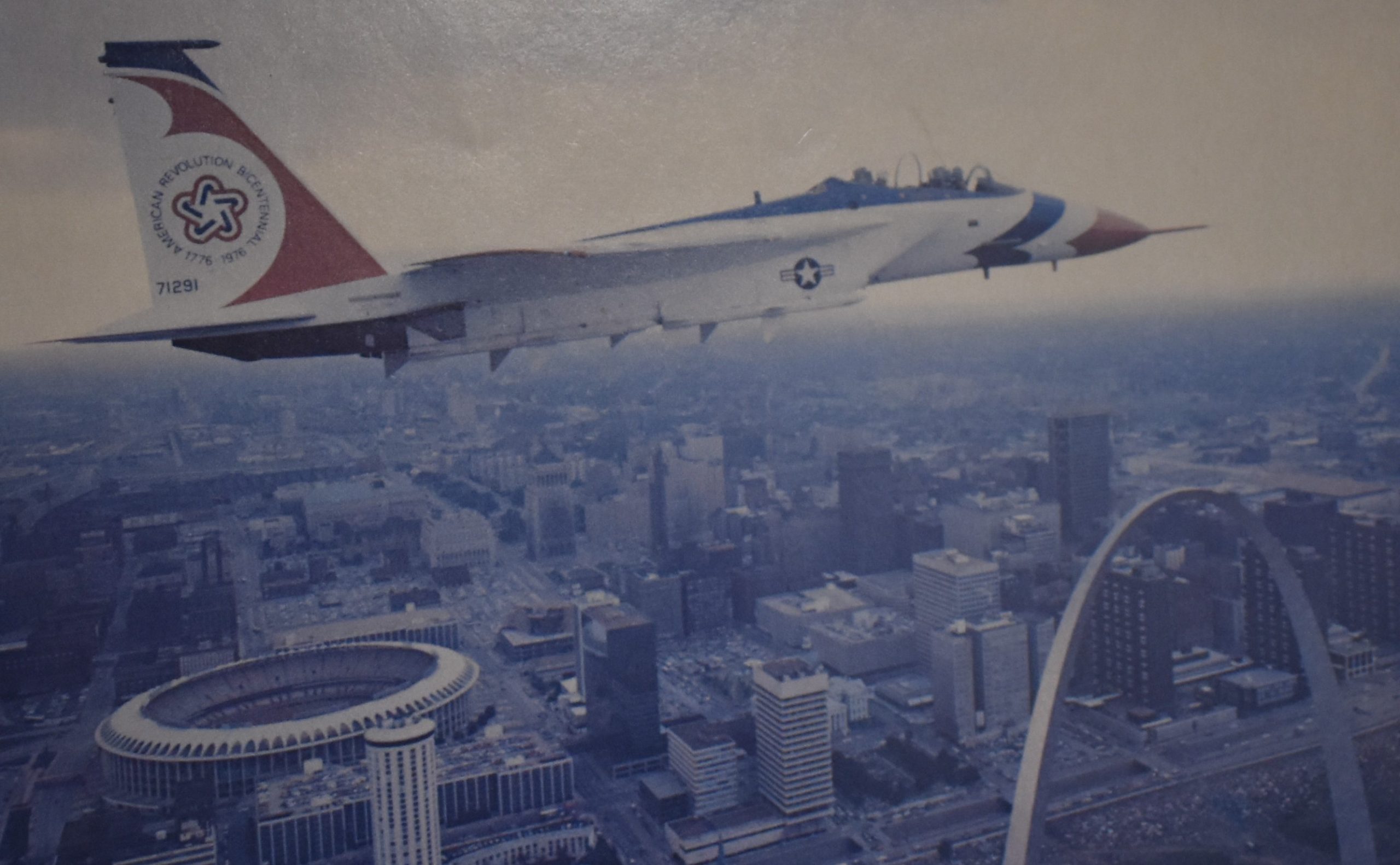
71-291 all gussied-up for the Bicentennial in July 1976, and flying over its birthplace of Saint Louis, Missouri. McDonnell-Douglas photo by Pat McManus.
Also in 1972, a combat capable trainer version was created called the TF-15A, but it was soon re-designated F-15B. The improved F-15C single seater, and the improved F-15D two seater, were created in 1979. Visually they all look the same as the improvements are internal.
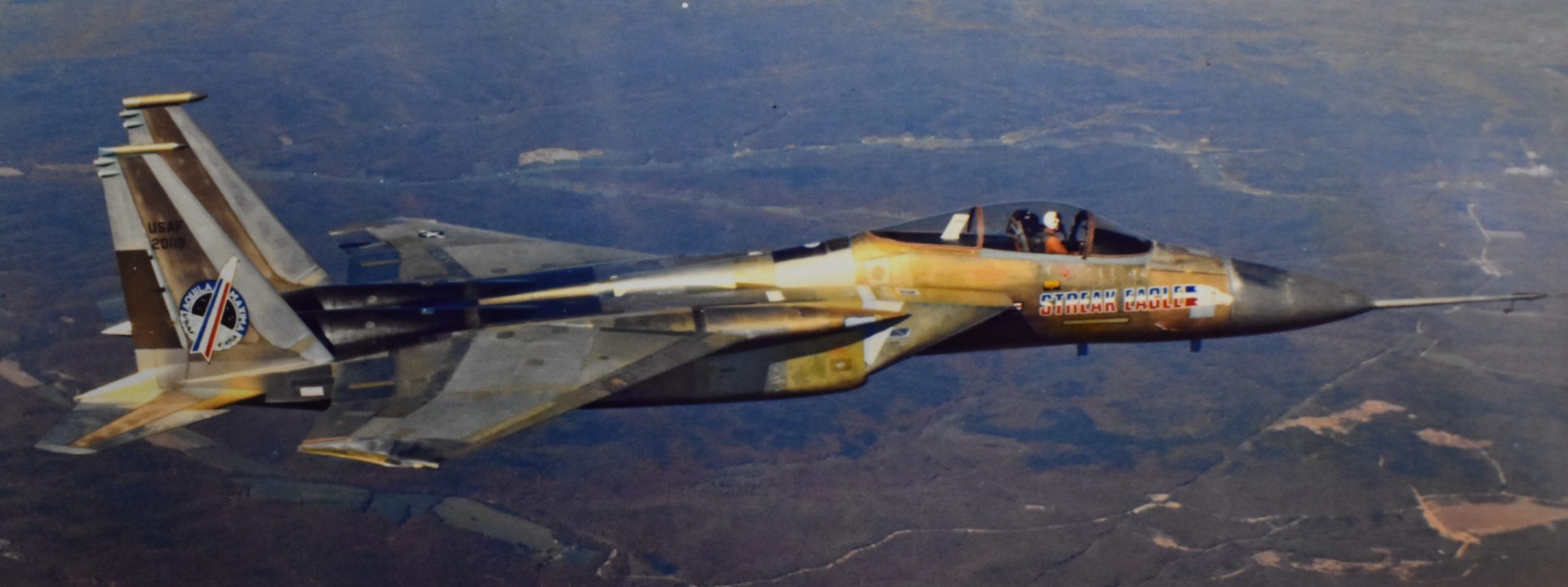
Bare metal Streak Eagle, named because it was naked, not fast. In the 1970s there was a fad called streaking, which meant you got naked and ran as fast as you could through a public gathering. The insignia on the vertical tail was removed for the high speed runs.
Between 16JAN1975 and 01FEB1975, a bare metal F-15A nicknamed Streak Eagle, broke eight time-to-climb world records. It was then donated to the National Museum of the U.S. Air Force, in 1980, where it was painted to protect from corrosion:
The F-15 is used by Israel, Japan, Qatar, Saudi Arabia, Singapore, South Korea and the United States.
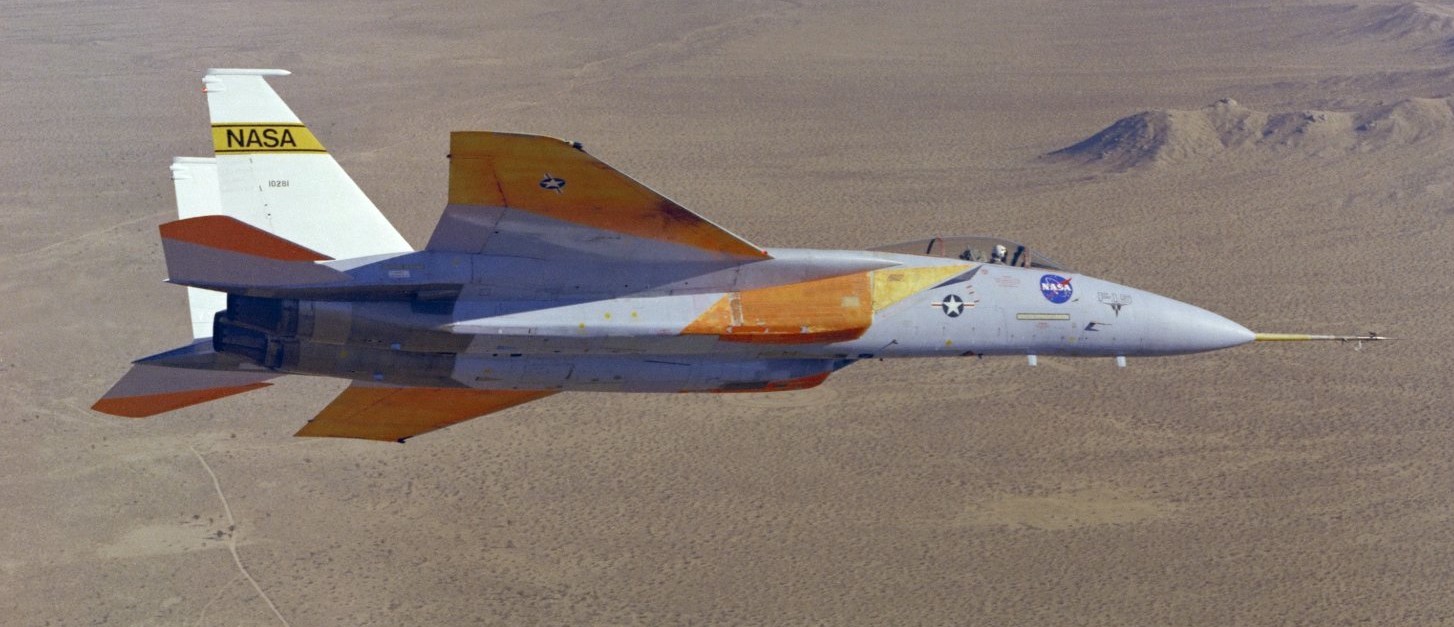
The second F-15A Eagle (71-0281) was turned over to NASA in February 1976. It was used in no less than 25 experiments which not only benefitted the USAF and NASA, but also the civilian airliner industry.
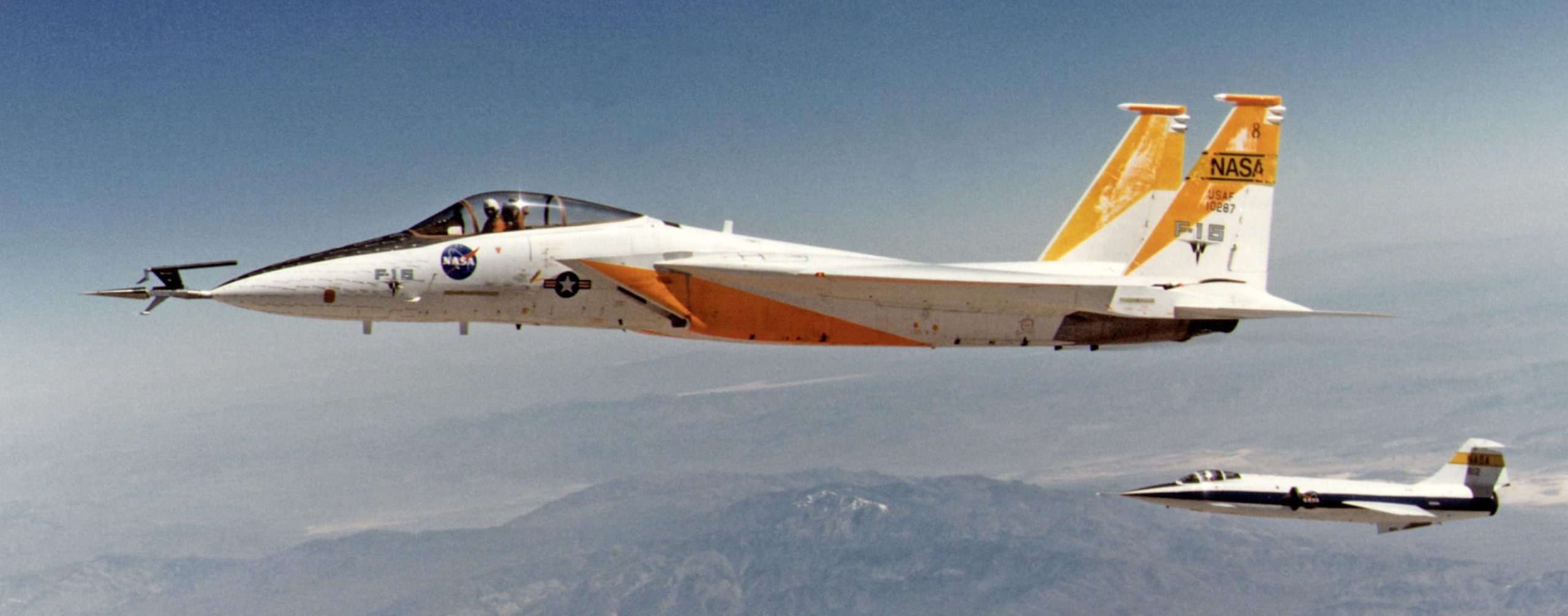
This NASA F-15A Eagle was used to compare actual in-flight aerodynamic data to data collected from models in wind tunnels, 17MAY1978.
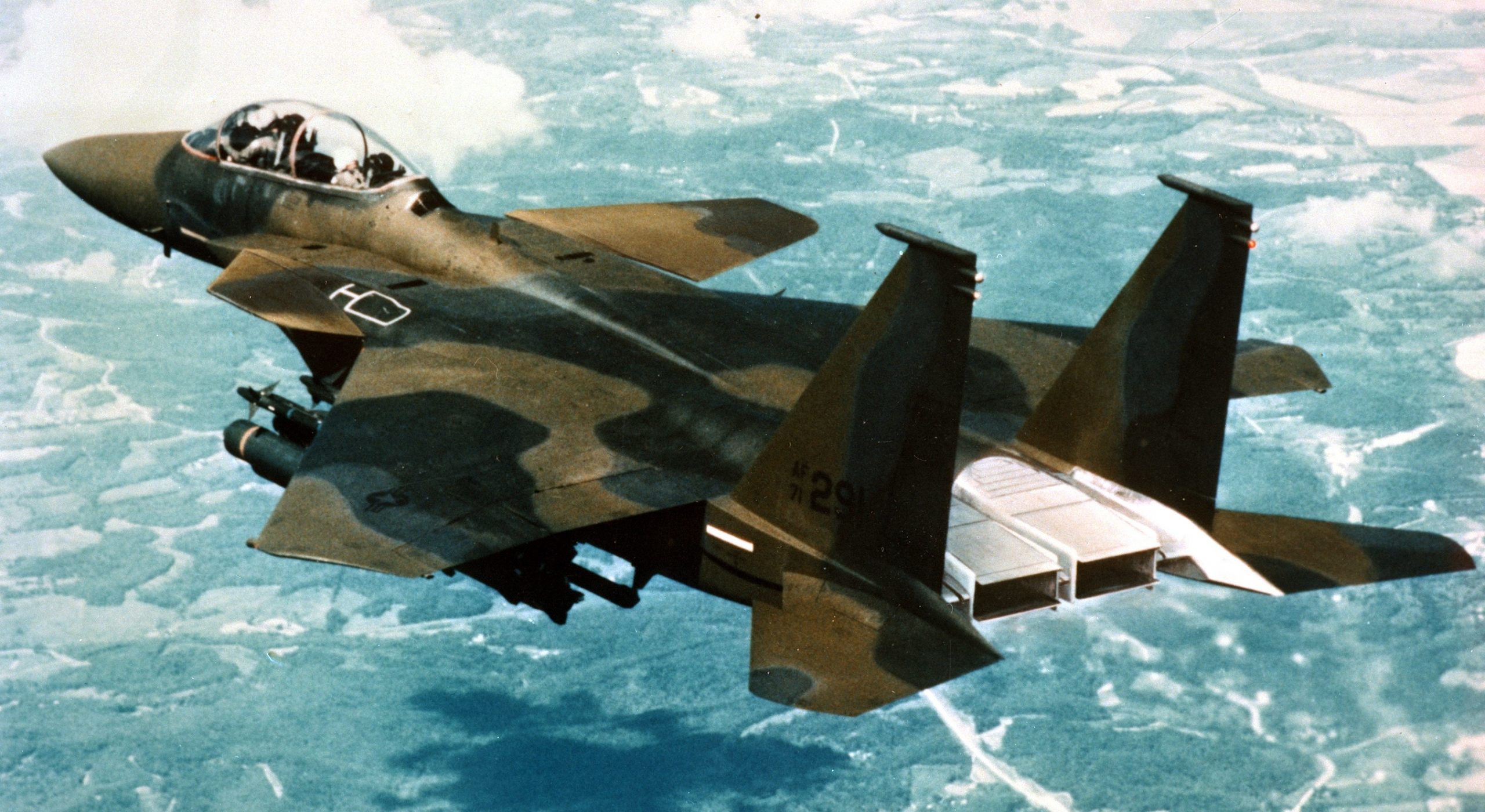
This is a NASA image showing what their proposed F-15-2D/STOL/MTD would look like, using NASA’s F-15B Eagle. The project would morph into the NF-15B ACTIVE program in the late 1990s.
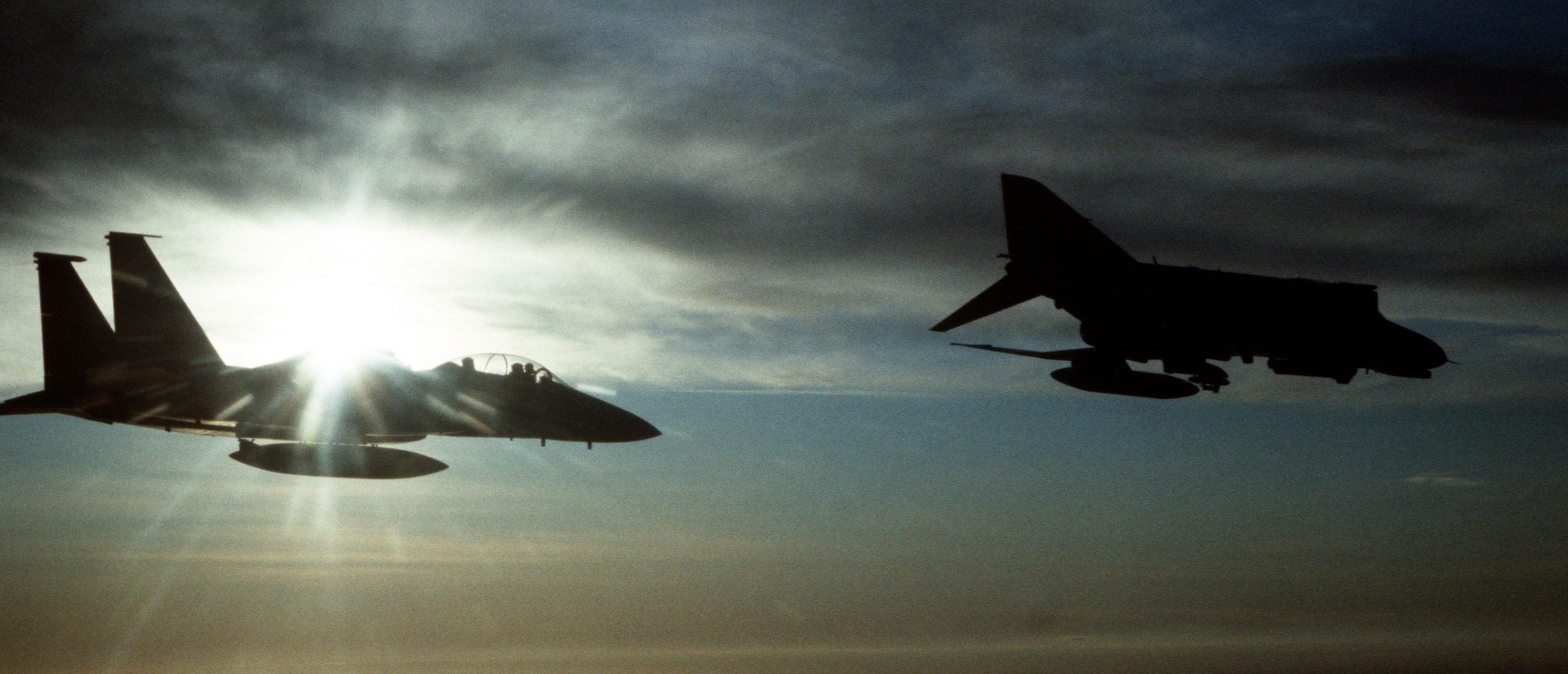
Somewhere over NATO Norway, the Sun is setting on an F-4E Phantom-2, while its replacement, an F-15B Eagle flies in formation. USAF photo by Master Sergeant Edward Condon, 08MAR1982.
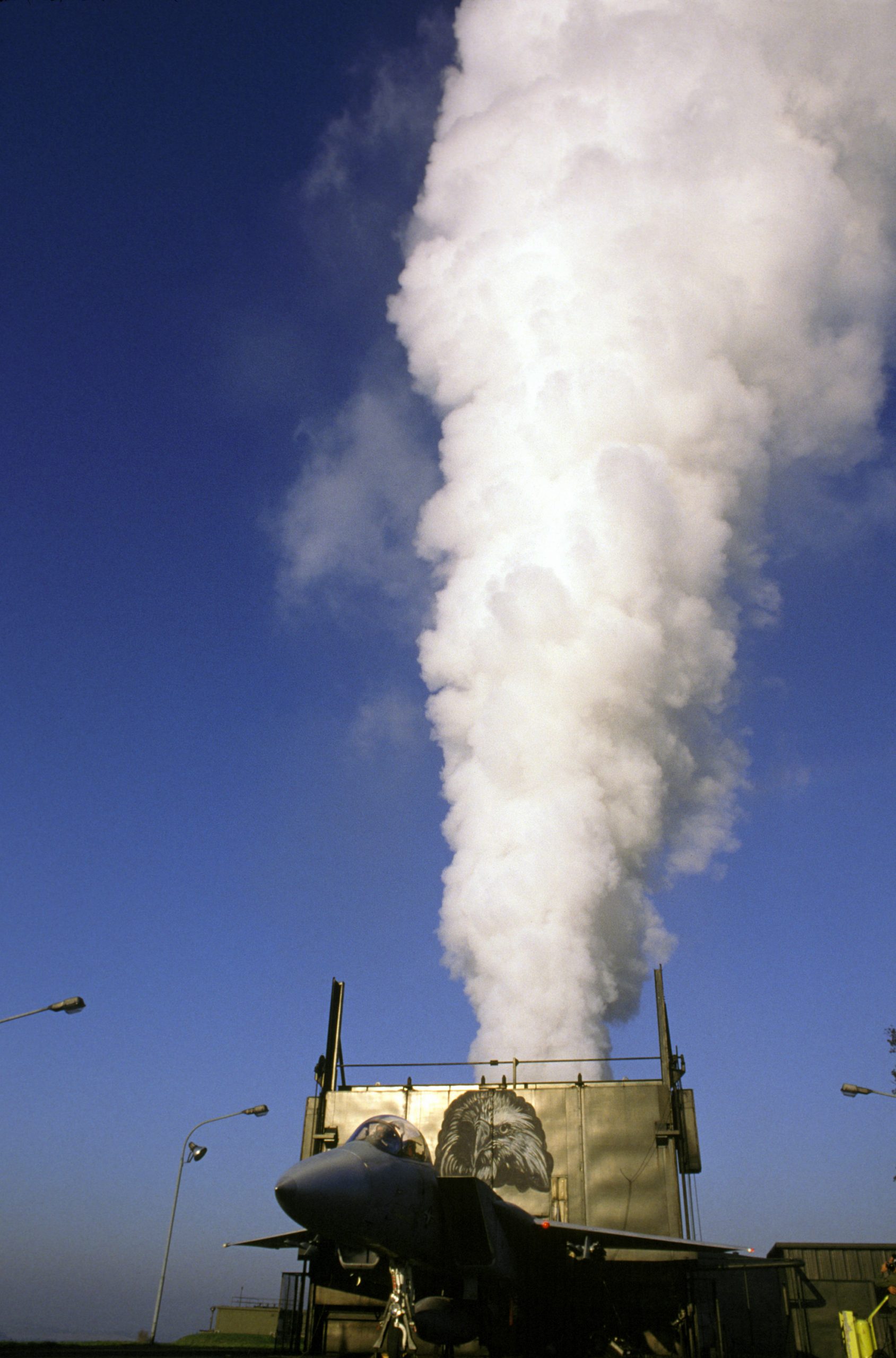
On Bitburg AFB, West Germany, an F-15D Eagle blows off steam, at full throttle in a ‘Baker Sound Suppressor Unit’. USAF photo by Jose Lopez Junior, November 1984.
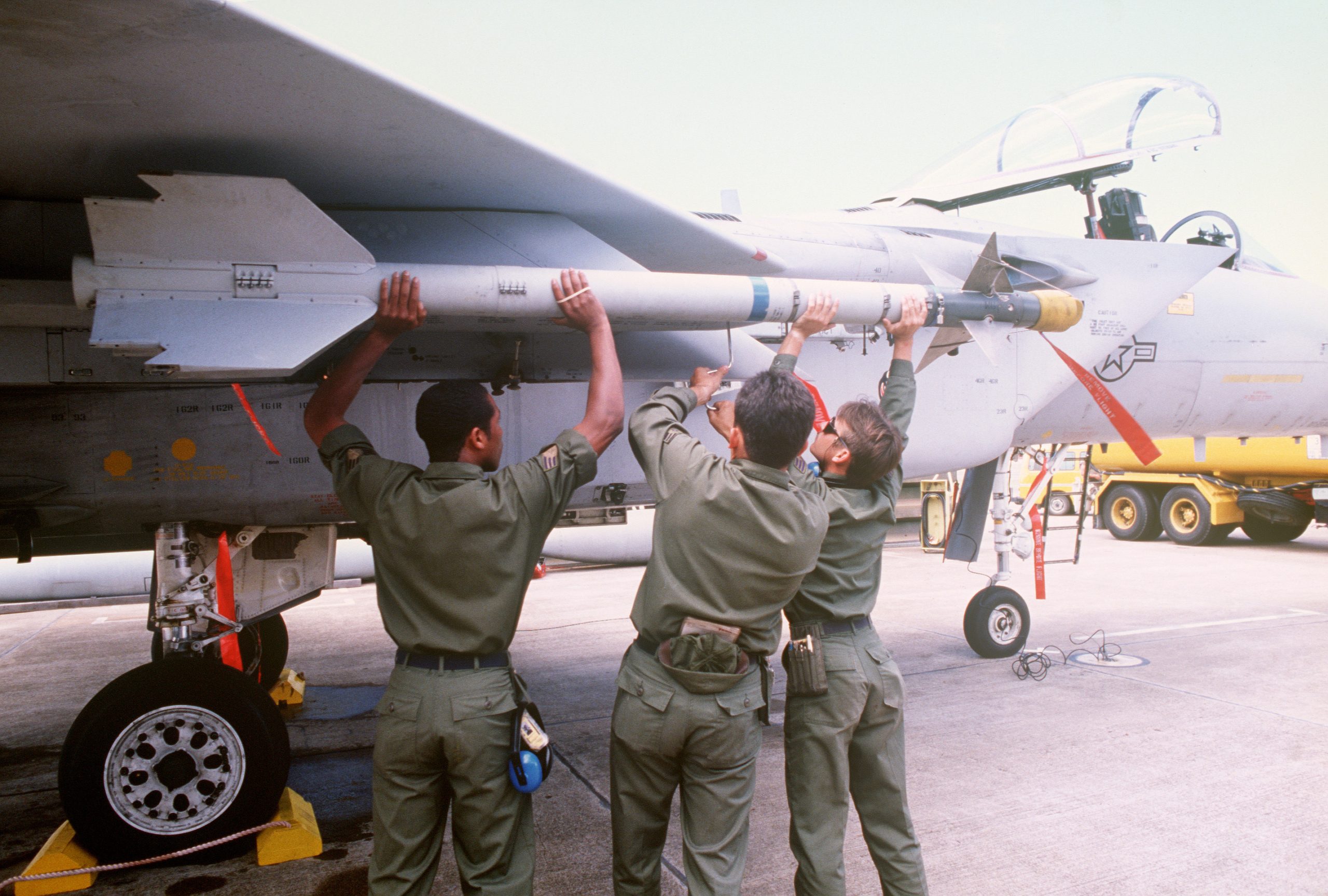
An F-15A Eagle gets armed with an AIM-9 Sidewinder anti-aircraft missile, while taking part in wargames over Australia, 01OCT1985. U.S. Air Force photo by Staff Sergeant Marvin D. Lynchard.
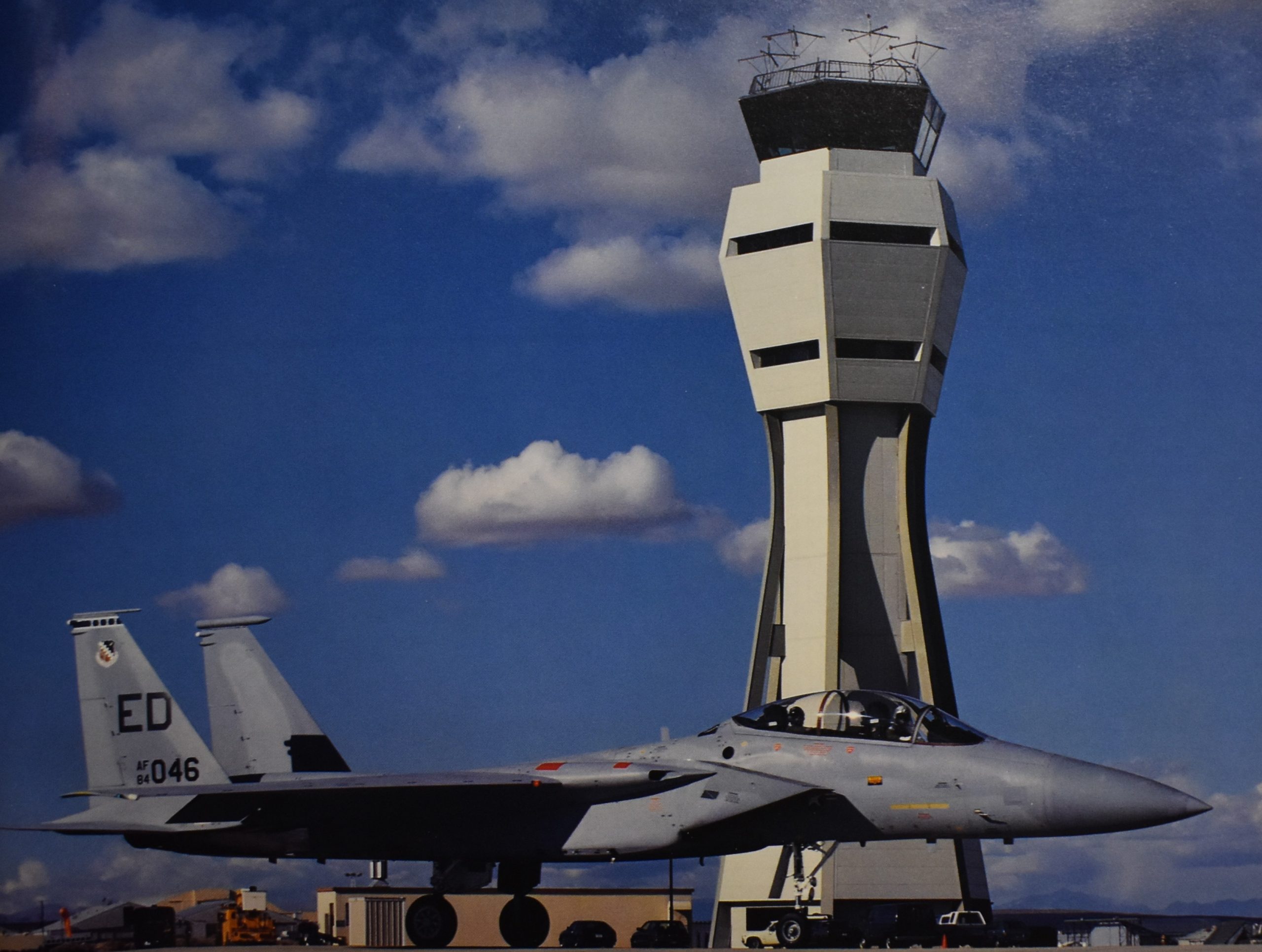
An F-15B Eagle taxis past the then new air traffic control tower on Edwards AFB, sometime in the mid 1980s (1987?).
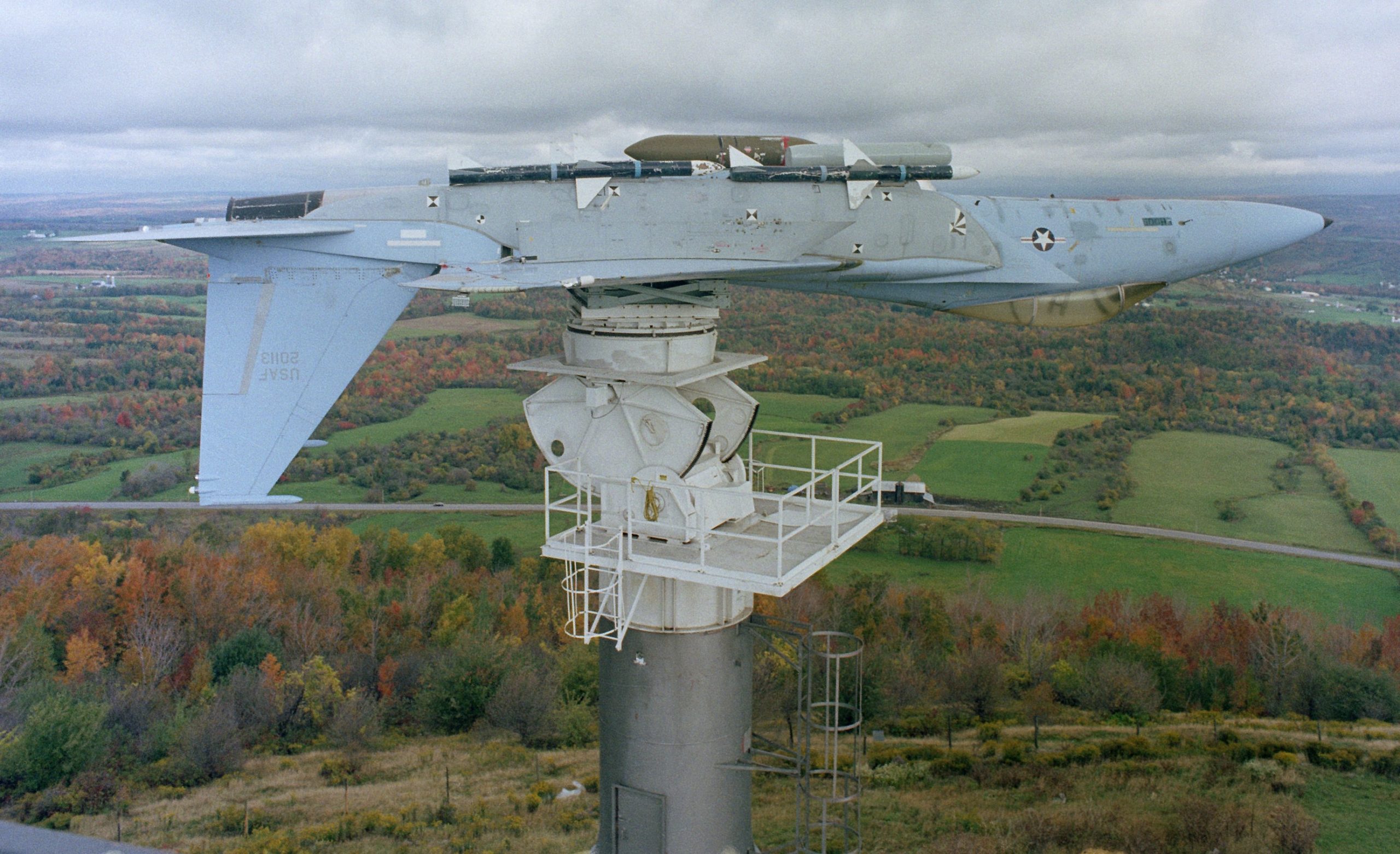
A pole dancing F-15C Eagle? It is mounted upside down on a pedestal at the Rome Air Development Center’s (aka USAF Super Lab) Newport, New York, test site. An external radar warning system pod mounted on the fuselage is being compared to the onboard radar warning system, 06OCT1988.
The ground attack F-15E Strike Eagle began service in 1989, however, the first production F-15E (86-183) came off the assembly line in 1986.
At first it was just called the F-15E Dual Role Fighter, no Strike Eagle. They stenciled on the nose F-15E No. 1, to be clear that it is the first F-15E.
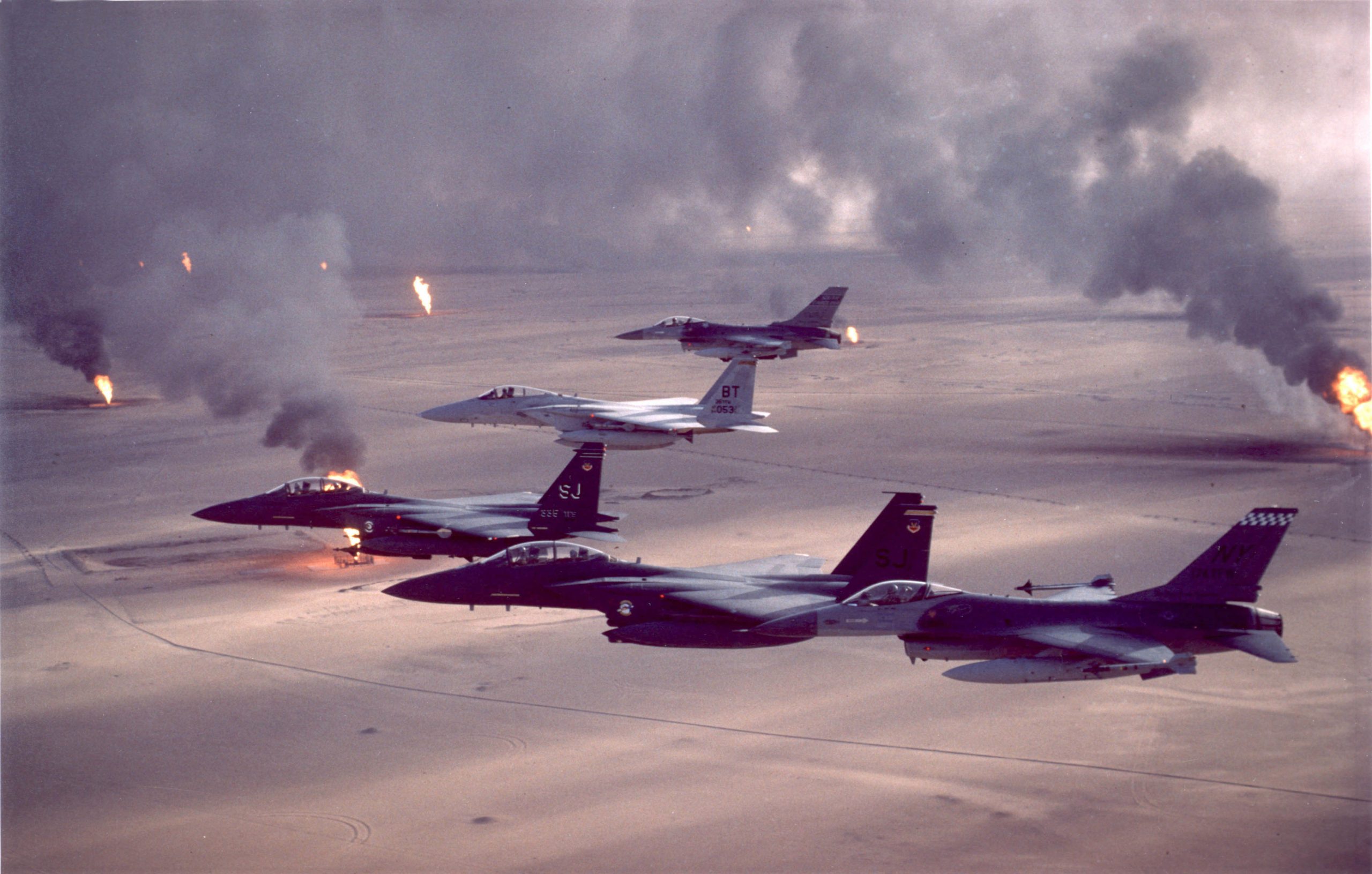
F-15E Strike Eagles, and a F-15C Eagle, are flanked by F-16s as they fly over burning oil wells, during Desert Storm in early 1991.
Cold War: Approximately 1947 (due to U.S. President Harry Truman’s Truman Doctrine) to 1991 (Operation Desert Storm, collapse of Soviet Union).
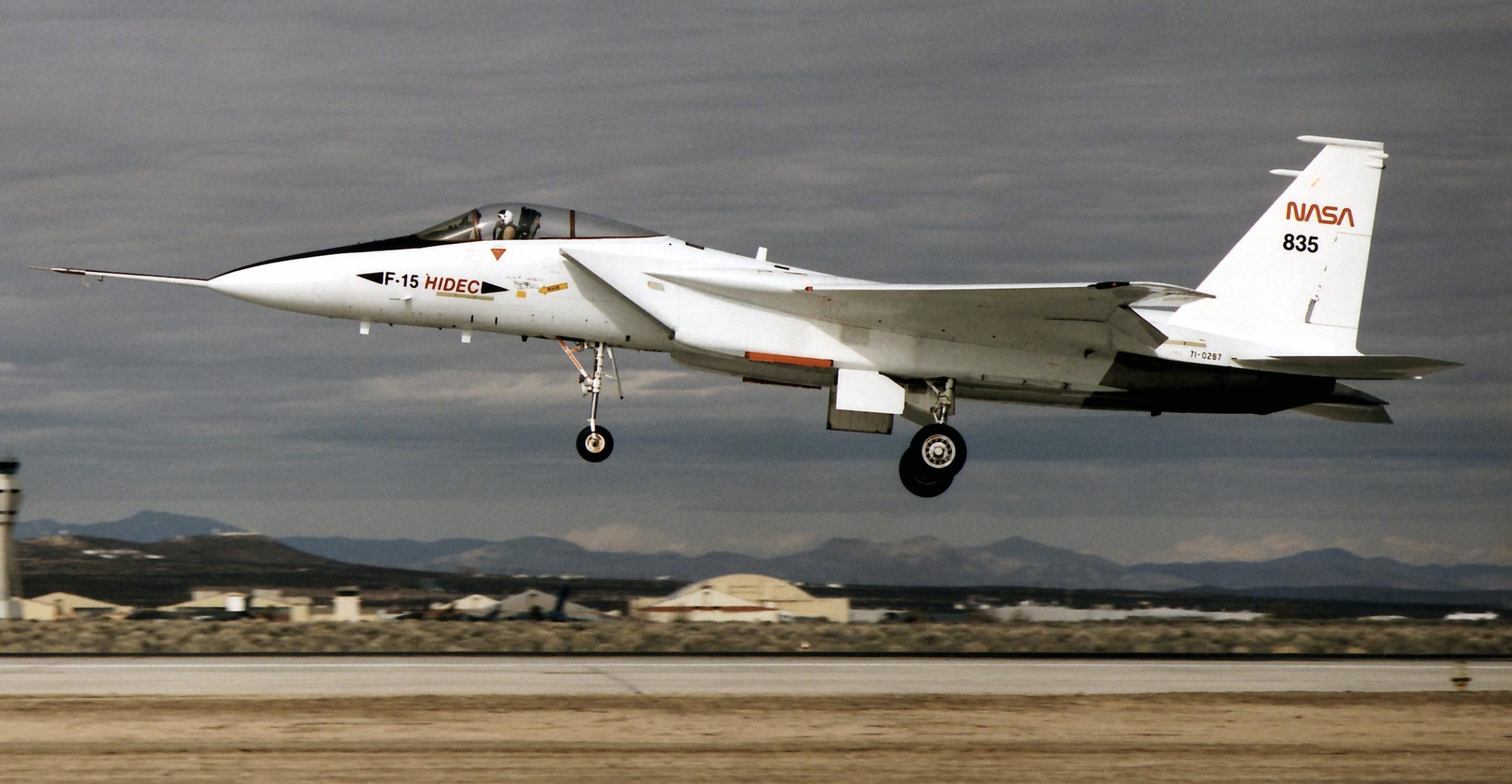
NASA’s HIDEC (Highly Integrated Digital Electronic Control) F-15A (NASA #835, USAF #71-287), Dryden Flight Research Center, Edwards AFB, California, February 1993.
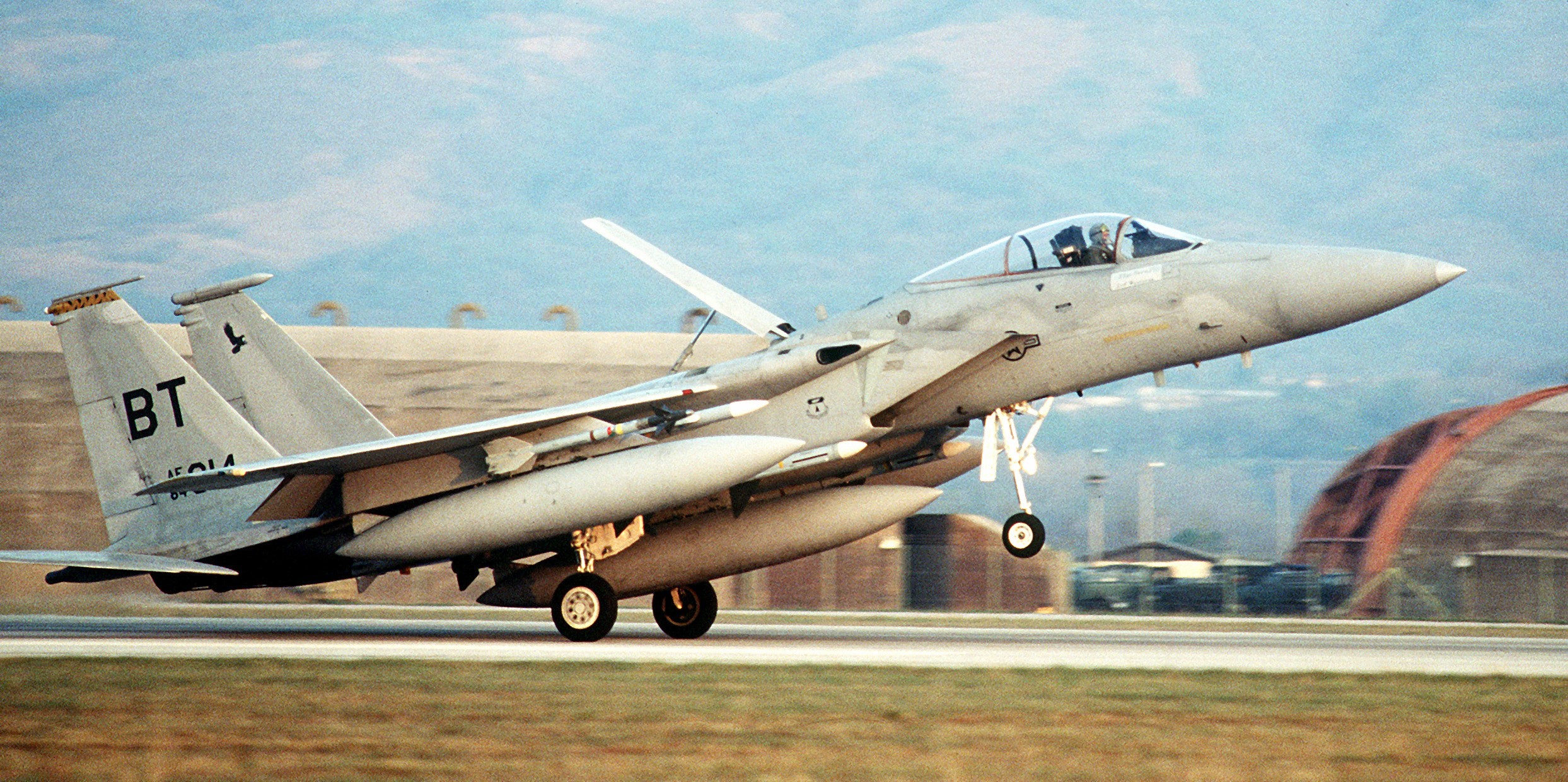
A 53rd Fighter Squadron F-15C Eagle returns to Aviano Air Base, Italy, after a No-Fly-Zone mission over Bosnia-Herzegovina. USAF photo by Technical Sergeant David Mcleod, 12APR1993.
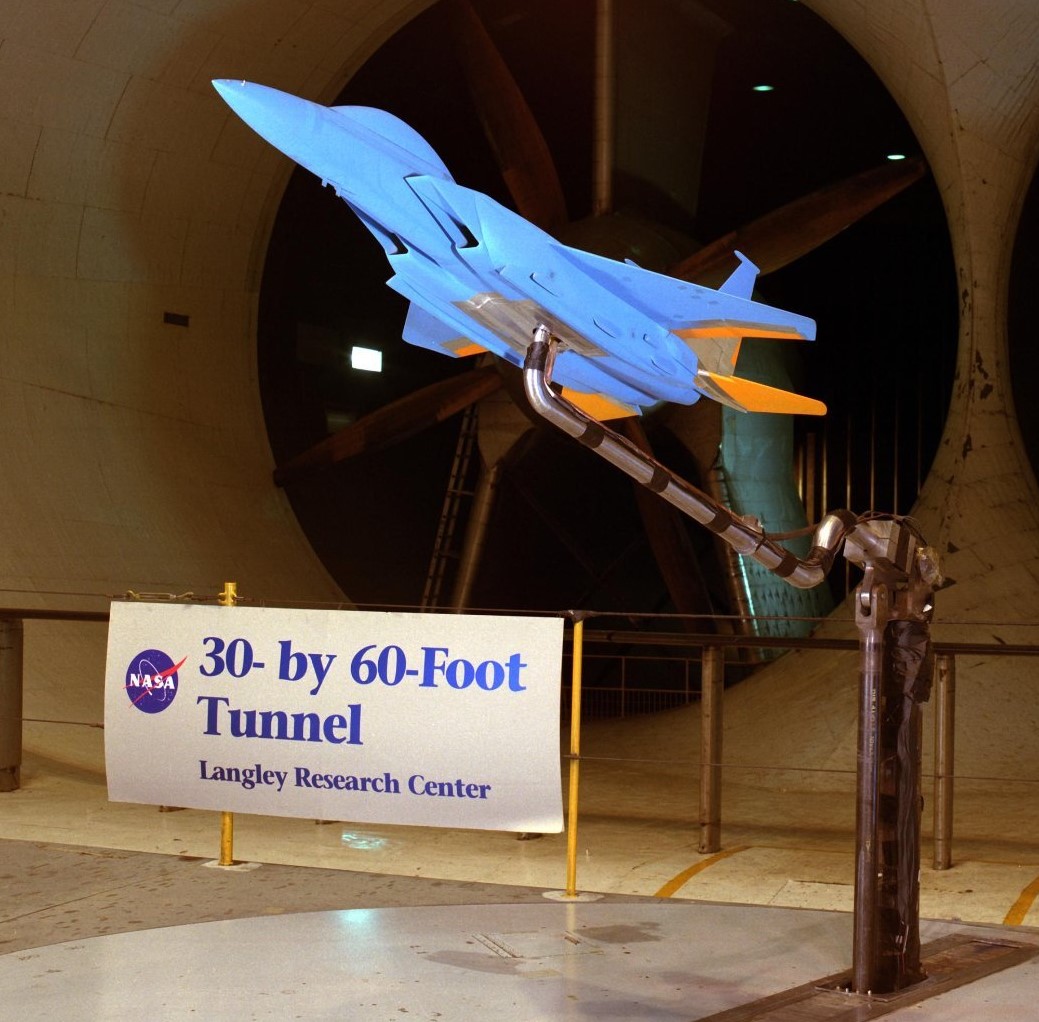
A 10% scale wind tunnel model of the F-15E Strike Eagle, used to test the viability of ‘pneumatic forebody controls’, September 1994.
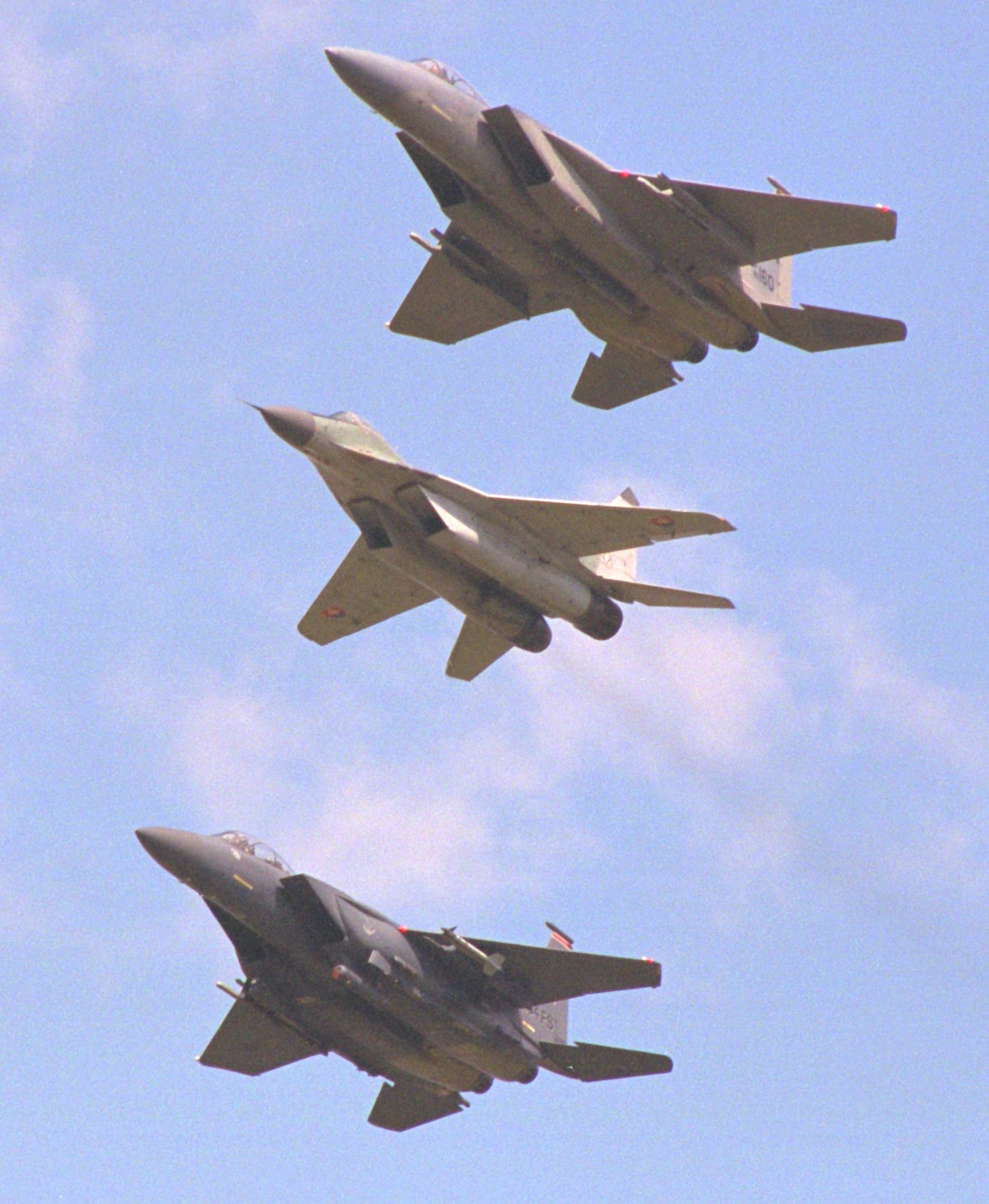
Size comparison between USAF F-15C Eagle & E Strike Eagle, and a Slovak MiG-29 Fulcrum. According to the USAF, this was the first time F-15 Eagles and MiG-29s flew together. Photo by Technical Sergeant Brad Fallin, 25MAY1996.
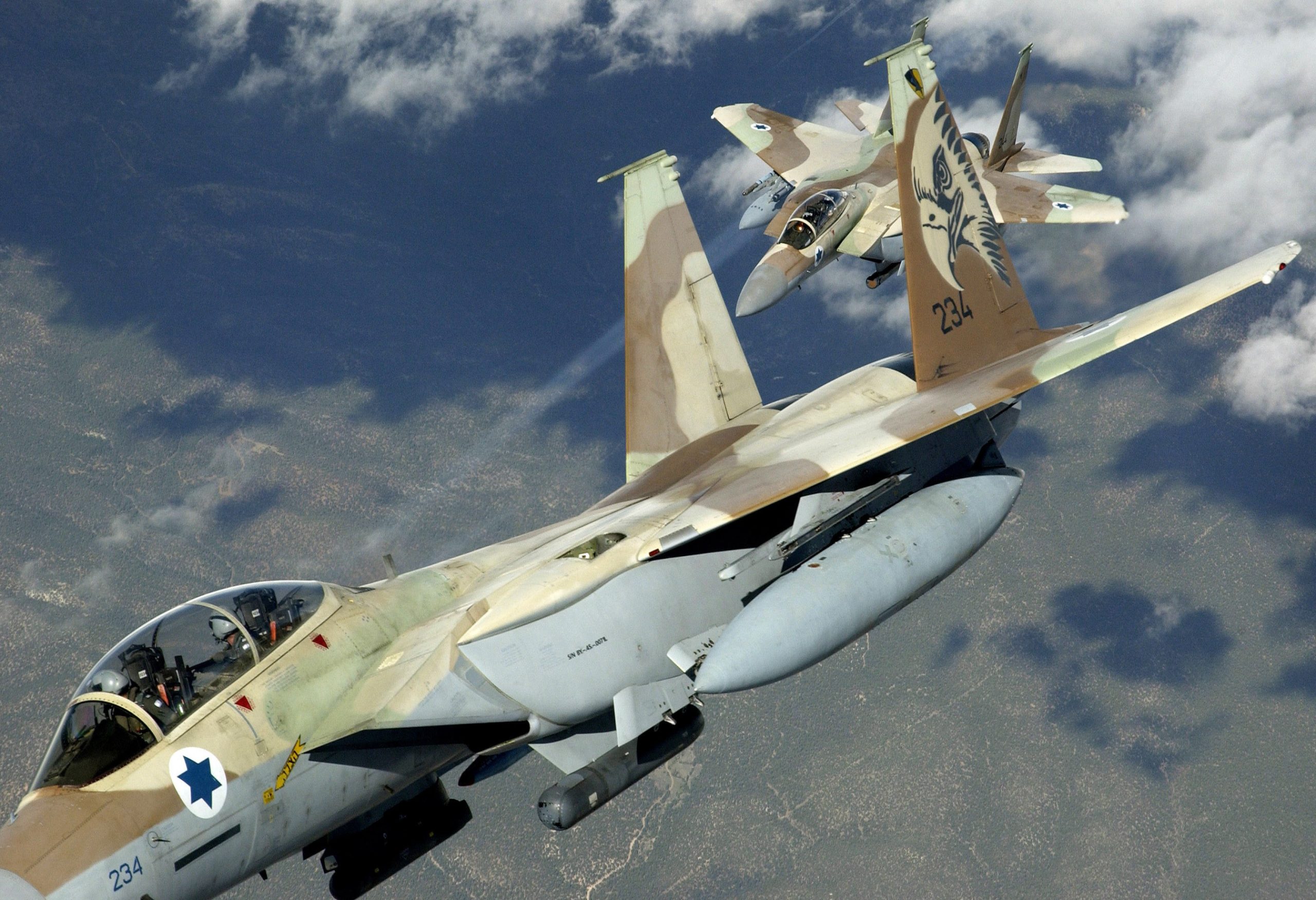
Two Israeli Defense Force F-15I Ra’am over Nellis AFB, Nevada. USAF photo by Technical Sergeant Kevin J. Gruenwald, 25AUG2004.
F-15E Strike Eagles using the Dare County Bomb Range, in North Carolina, July 2012. USAF video by Airman First Class Samantha Ducker:
December 2012:
For first time, JAPAN SCAMBLES F-15Js TO INTERCEPT CHINESE AIRCRAFT
NATO 2013:
May 2016:
OREGON KOTKAT LENTÄÄ SUOMEN YLI
USAF video, by Staff Sergeant Esteban Esquivel, of Israeli F-15I Ra’am operations on Uvda Air Base, Israel, May 2017:
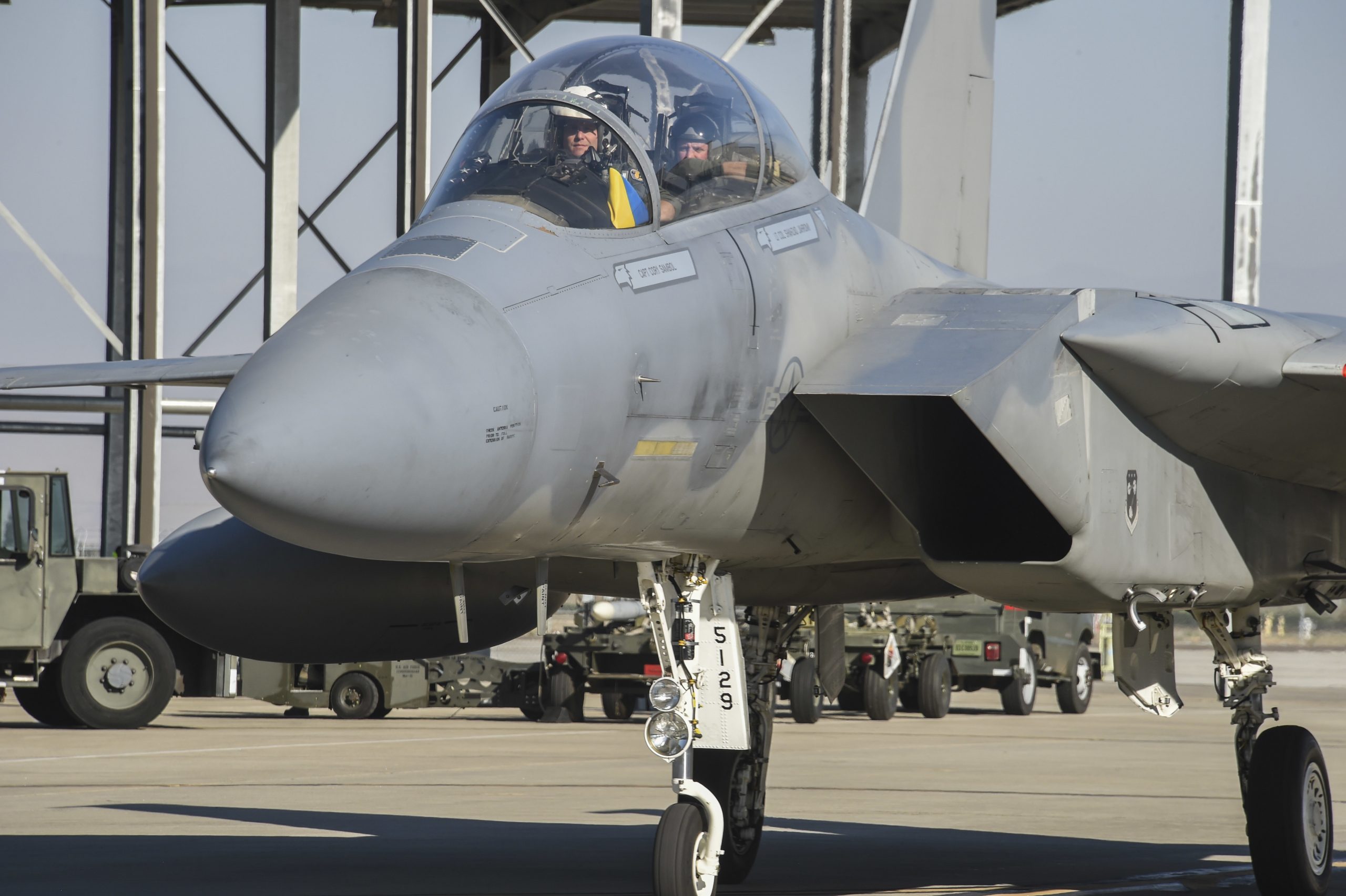
A Ukrainian flag behind the windshield of a California Air National Guard (CANG) F-15D Eagle, 26OCT2017. A Ukrainian General is in the front seat while a CANG Lieutenant Colonel is in the back seat, it was a flight promoting the military partnership of California and Ukraine. CANG photo by Senior Master Sergeant Chris Drudge.
Somewhere in the Middle East (South West Asia), September 2017 USAF video report about F-15E Strike Eagle operations against so-called Islamic State:
2018:
MOUNTAIN HOME AFB, IDAHO, F-15E WALK-AROUND
California Air National Guard (CANG) video, by Staff Sergeant Christian Jadot, of historical moment when for the first time California’s 144th Fighter Wing lands their F-15C & D Eagles on Starokostiantyniv Air Base, Ukraine, 06OCT2018 (it should be noted that it was not the first time for California to send aircraft to Ukraine, in 2011 the CANG sent F-16 Falcons):
CALIFORNIA OREL NAD UKRAINOY ОРЕЛ НАД УКРАИНОЙ
July 2019:
Kadena Eagle celebrates 60 years of U.S.-Japan relations
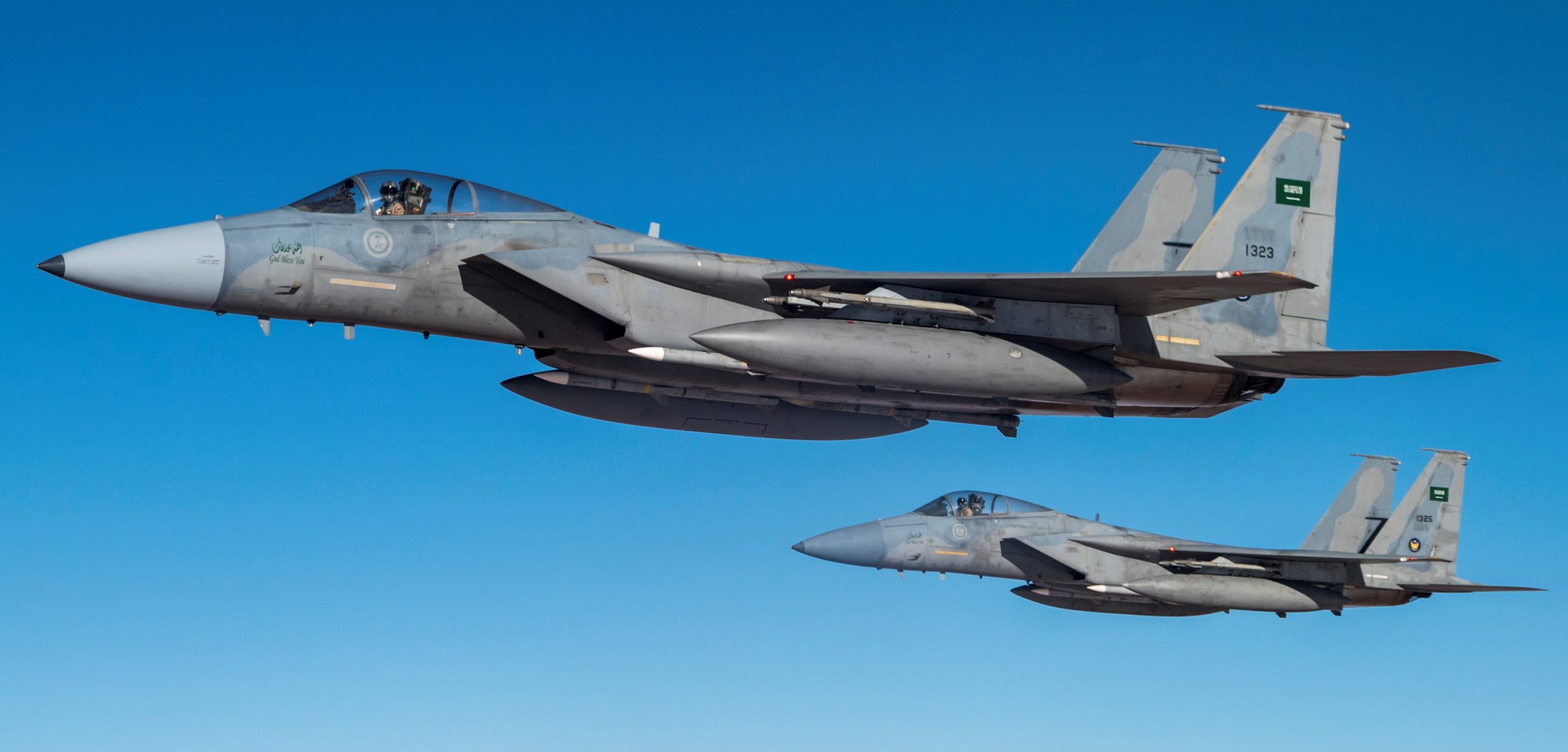
Royal Saudi Air Force F-15C Eagles, over the Kingdom of Saudi Arabia. USAF photo by Technical Sergeant Christopher Ruano, November 2019.
PANDEMIC OVERFLIGHT: THE SANDMAN ENTERS
The F-15 has adjustable air intakes. In this May 2020 video, pay attention to the intake as the turbines ignite:
IDAHO’S TIGERS & THUNDERBOLTS BLAST THE SKIES OVER FLORIDA!
USAF video of 493rd Fighter Squadron F-15C Eagles launching NATM-9M training missiles at aerial targets, somewhere over the Atlantic Ocean, 08DEC2020:
USAF video, by Master Sergeant Larry E. Reid Junior, showing Japanese F-15J Eagles landing on Anderson AFB, Guam, 28JAN2021:
March 2021:
The new Boeing F-15EX HAS ARRIVED! COMMANDER SAYS “IT’S AN EX-CITING DAY!”
SINGAPORE’S IDAHO BASED SKY PIRATES BOMB LAS VEGAS?
On 04MAY2021, U.S. Air Force F-15E Strike Eagles, based on the United Kingdom, conducted an “Independence Flyover” of the tiny NATO country of Latvia. Short video of F-15E getting refueled enroute to Latvia by Technical Sergeant Emerson Nuñez:
USAF video, by Staff Sergeant Danielle Sukhlall, of Japanese F-15J Eagles operating from Eielson Air Force Base, Alaska, 07JUN2021:
A November 2021 USAF promo video, by Staff Sergeant River Bruce, states the F-15 series of aircraft has a long way to go before retirement:
In January 2022, at least six F-15E Strike Eagles (from Seymour Johnson Air Base, North Carolina) were deployed to NATO Belgium, for so-called air policing missions against Russia. Video via NATO:
February 2022:
F-15E Strike Eagles ‘forward deployed’ to NATO Estonia
July 2022:
F-15E GETS NEW COLORS, VIA VINYL DECALS.
Edwards AFB reveals it has the oldest, and fastest, operating F-15 in the world, USAF video by Giancarlo Casem:
USAF promotional video, by Harley Huntington, F-15 First Flight to F-15EX:
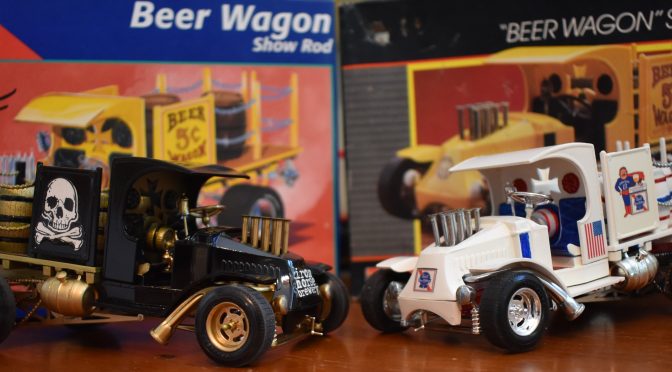
The classic Tom Daniel’s Monogram Beer Wagon (also issued as a Cola Wagon under the Revell-Monogram brand) was first issued in 1967. Apparently, it was last issued in 2016.
I built two Monogram Beer Wagons as xmas gifts for two guys who love their specific brands of beer; Pabst and Iron Horse Brewery’s Irish Death.
I used aftermarket Pabst decals meant for a 1970s gasser/drag racer. Alcohol based chrome paint was used on the headers, works good but is expensive.
The markings for the Irish Death were cut from Iron Horse Brewery’s 36 square-root package, thinned down and pasted with clear setting glue. Then I covered with lots of clear paint.
I tried using different brands of gold spray paints, all claiming to look like gold chrome. None of them lived up to their promise.
Video, the real 1:1 scale Beer Wagon:
Notice that the front axle doesn’t sit properly on both kits.
These old kits have a lot of fragile parts. Besides the plastic chains being prone to breakage, the rear light posts also like to break. On the Pabst Wagon I had to make new posts out of skinny plastic sprues. I drilled holes in the chassis to fix them in place, they turned out to be sturdier.
The kool thing about these old kits is that they’re great starting points for kool kustoms.
VEHICLE I-D with kit review: MODEL T & WHITE MOTOR WARRIORS
DEUTSCHLAND ÜBER ALLES!: REVELL USA IS DEAD, LONG LIVE REVELL GERMANY!
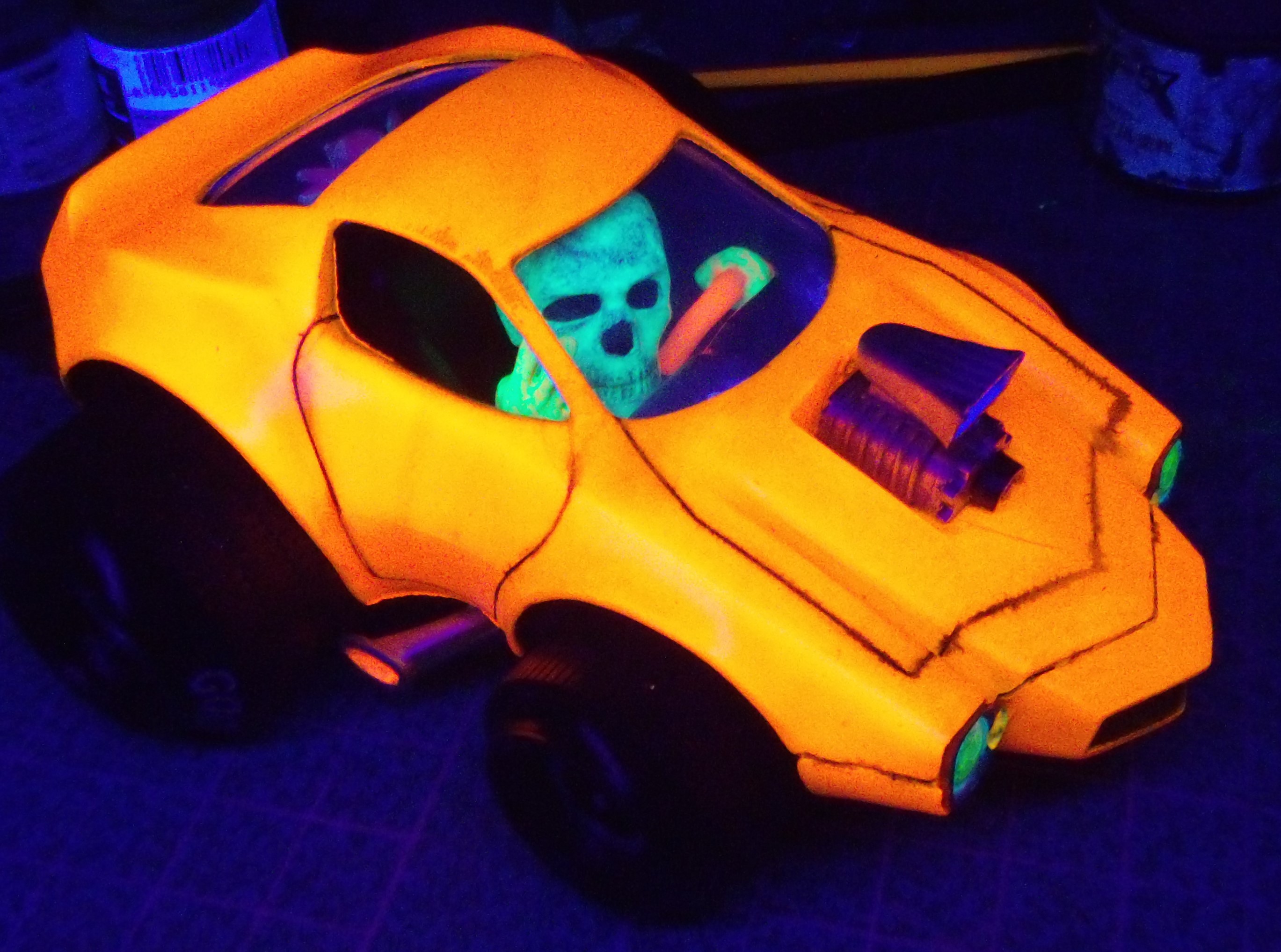 BLACKLIGHT REVELL DEAL’S WHEELS
BLACKLIGHT REVELL DEAL’S WHEELS
REVELL 1937 FORD PICKUP OR WHY MODEL ASSEMBLY INSTRUCTIONS CAN BE WRONG!
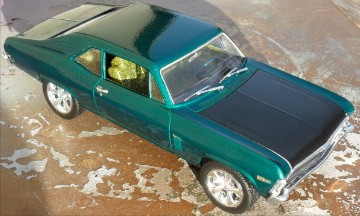
The hood got a clear coat of Plaid acrylic matte. The inner lip of the front fender wells had to be sanded slightly thinner so the Bullet Mustang tires would fit inside. I think the problem was caused by the way I mounted the disc breaks on the front suspension.
MORE PROOF INSTRUCTIONS ARE WRONG:
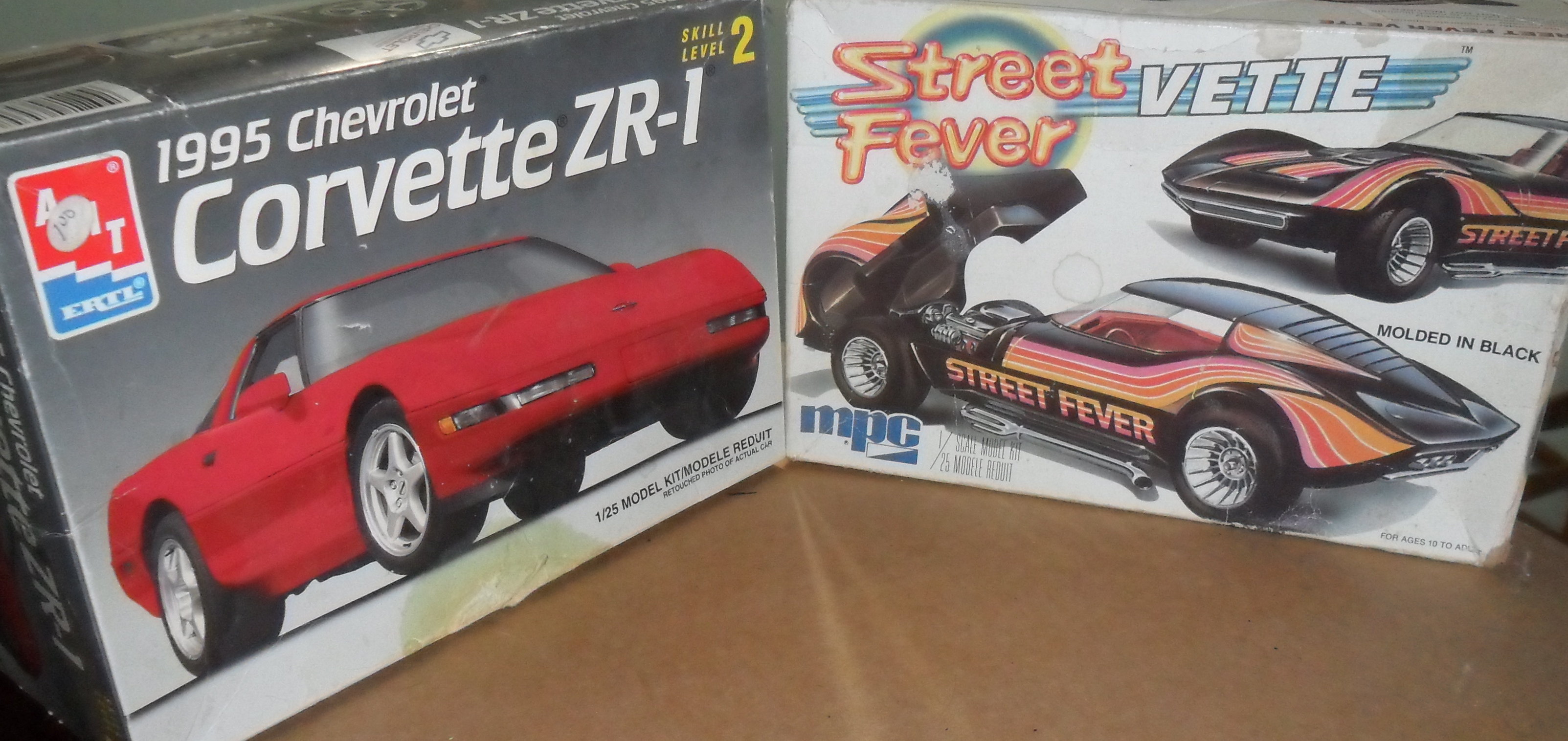
An old MPC custom Corvette and an AMT 1995 Corvette, missing parts, broken or unusable parts, combined to make a unique kit.
SALVAGING TWO DIFFERENT JUNK KITS INTO ONE UNIQUE CORVETTE
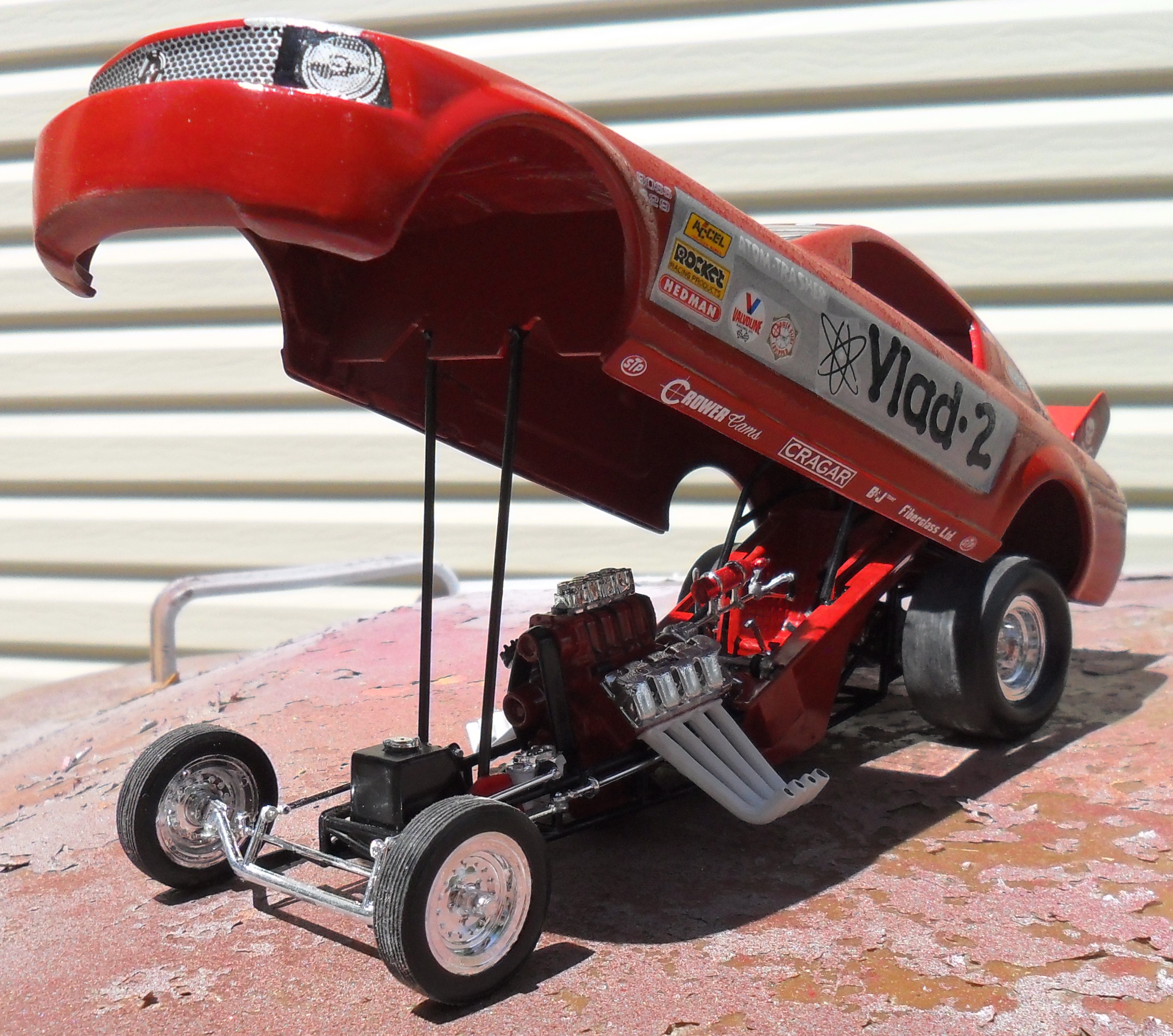
Open wide! In hindsight I should have used a wider/stronger chassis as the modified 2006 Mustang body is very heavy.
2006 Revell-Monogram MUSTANG FUNNY CAR DRAGSTER conversion
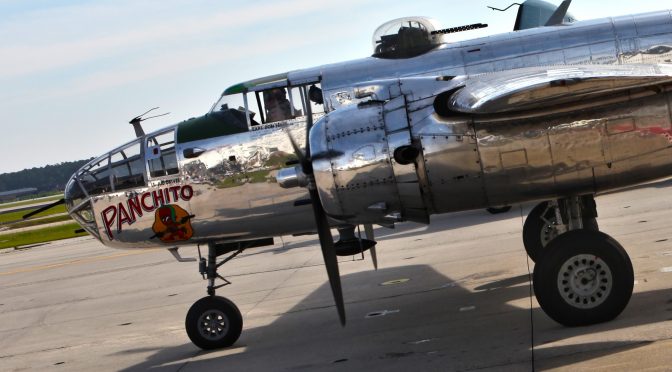
Shaw Air Force Base, South Carolina, 02APR2022.
Panchito = A derogatory name
Panchito is a North American B-25J-25-NC Mitchell built in the last year of World War Two. Through the 1950s it was used for training. In the 1960s it became water bomber ‘Tanker 32’. In the early 1970s it was a bug sprayer called Big Bertha. Since the mid-70s it was a museum bird, finally becoming Panchito in the late 1990s. That information pertains to the specific aircraft currently flying, the original Panchito flew bombing missions over Okinawa during the summer of 1945, and then was apparently buried in a Filipino ‘grave’, with a whole bunch of taxpayer funded aircraft, when the war ended.
USAF video report from June 2007, about Panchito:
In 1981, Monogram Models Incorporated issued their fine 1:48 scale B-25J Mitchell kit, with markings for the original Panchito (which has a different tail code than today’s Panchito). Unfortunately Monogram didn’t include any historical info about the plane (except for a small blurb on the side of the box-top).
27AUG2017, Dover AFB air show, Delaware.
National Museum of the U.S. Air Force at Wright-Patterson Air Force Base, Ohio, 17APR2017.
Manassas Regional Airport, Virginia, 21SEP2016
Joint Base McGuire-Dix-Lakehurst, New Jersey, 14MAY2016.
Marine Corps Air Station Cherry Point, 29APR2016.
Louisville, Kentucky, 22APR2017.
MCAS Cherry Point, North Carolina, 04MAY2012.
Video, start-up, taxi, take-off, return:
Take-off video from April 2012:
VEHICLE I-D: 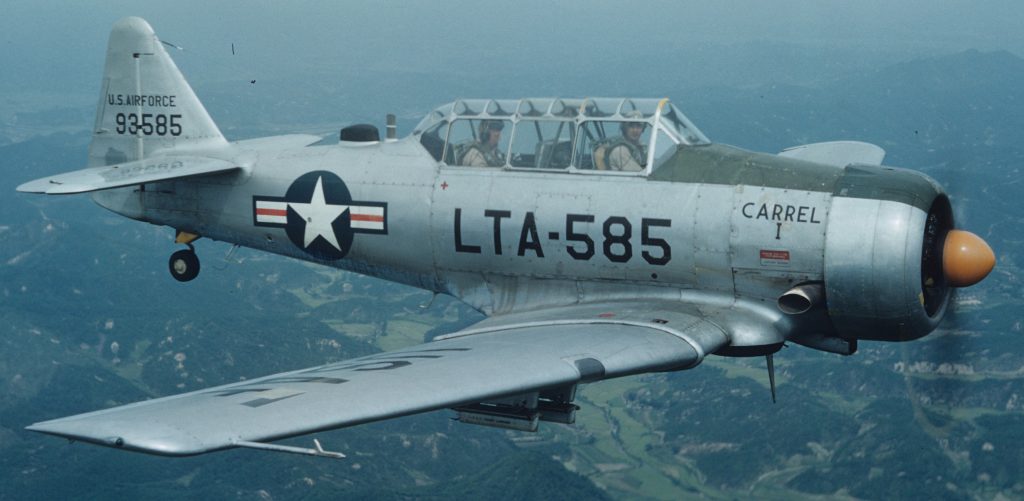 AIRBORNE HURRICANE HUNTERS, WHEN DID IT ALL START?
AIRBORNE HURRICANE HUNTERS, WHEN DID IT ALL START?
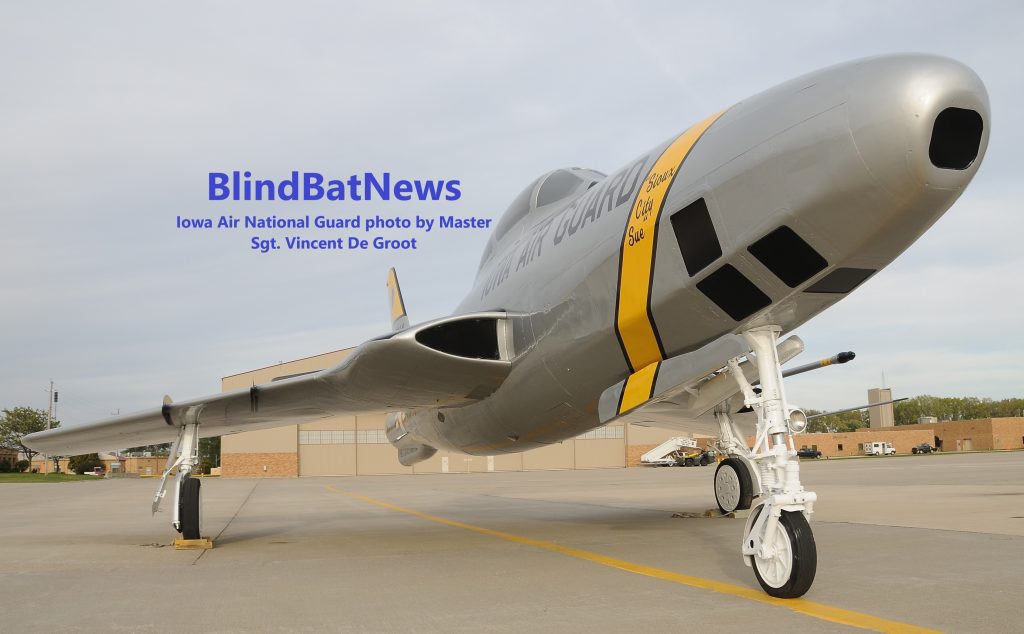 RF-84F THUNDERFLASH & YRF-84F, AN APPEAL TO MONOGRAM!
RF-84F THUNDERFLASH & YRF-84F, AN APPEAL TO MONOGRAM!
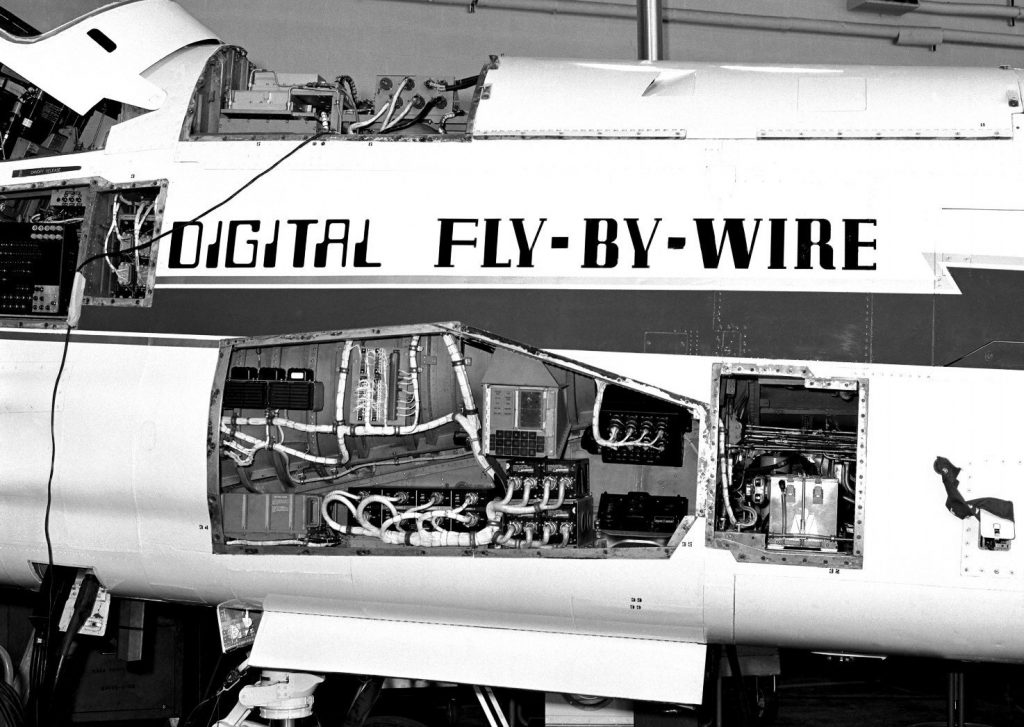 F-8 DFBW, OR ANOTHER REASON WHY TODAY’S TECHIE GENERATION OWES THE MILITARY INDUSTRIAL COMPLEX!
F-8 DFBW, OR ANOTHER REASON WHY TODAY’S TECHIE GENERATION OWES THE MILITARY INDUSTRIAL COMPLEX!
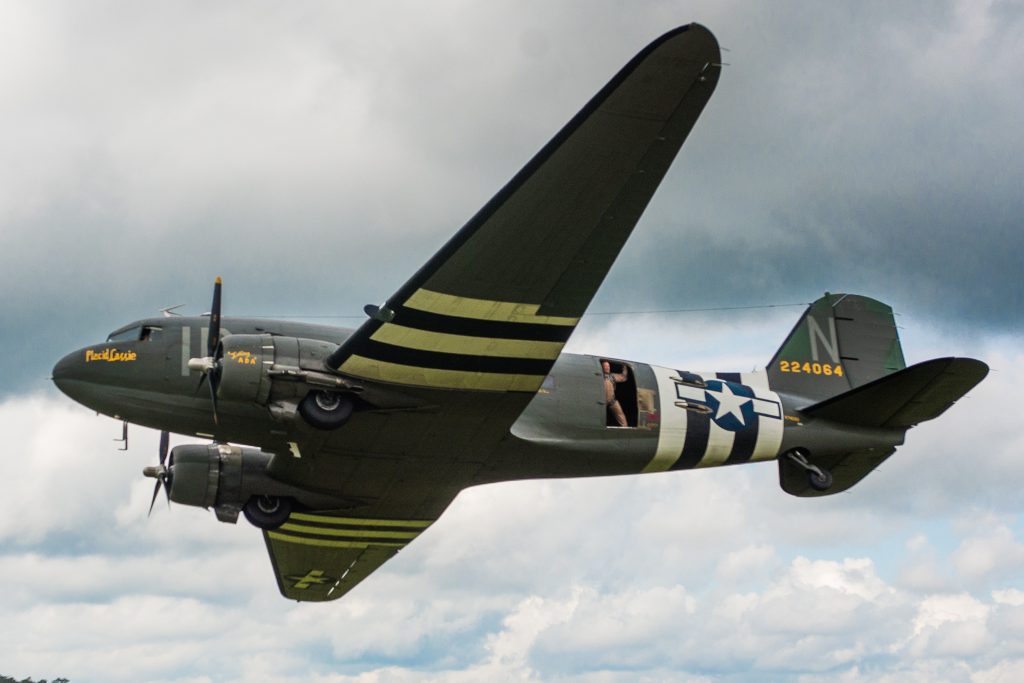 C-47 DAKOTA/SKYTRAIN, DOUGLAS COMMERCIAL-3, R4D GOONIES!
C-47 DAKOTA/SKYTRAIN, DOUGLAS COMMERCIAL-3, R4D GOONIES!
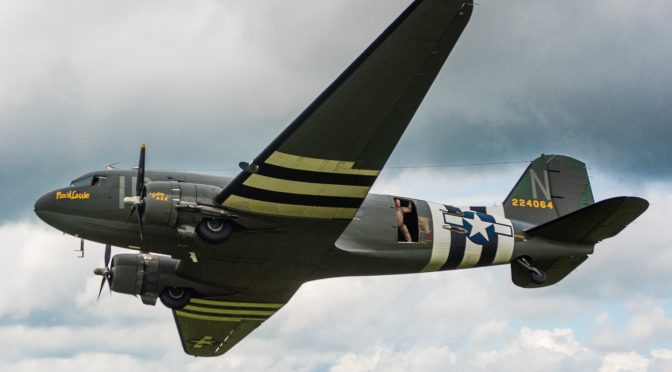

Entex got it right when their model box stated it was “The plane that changed the world.” It’s my top pick for Zombie Plane, after seven decades it just won’t die, still flying today in both private and commercial use, and apparently some countries are still using it for military purposes. It even commands the respect of wartime enemies, who adopted it for their own use.
Production began in 1936 and from then until now the C-47/DC-3/R4D has been used by at least 82 countries.
Fort Benning, Georgia, 16AUG2019: 
Berlin Airlift 70th Anniversary, Clay Kaserne, Germany, 09-11JUN2019:














Videos:
May 2019, DC (Douglas Commercial)-3 over Catalina Island, California: 
“That’s all brother!”, Air Mobility Command Museum on Dover Air Force Base, Delaware, May 2019:
April , 2019 video report, history of 3rd Combat Cargo Squadron which flew the China-Burma-India Theater during WW2:
“That’s all brother!”, Sumpter Smith ANGB Alabama, April 2019: 





November 2018, Homestead Air Reserve Base, Florida: 
May 2016, AC-47 Spooky over New Mexico: 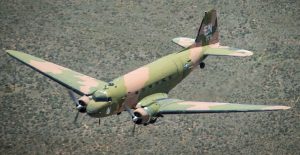
February 1964, M2-F1 lifting body tracking behind a Goonie, Edwards AFB, California: 
August 1963, NASA R4D-5/C-47H: 
1956, NACA R4D, High-Speed Flight Station, Edwards AFB, California: 

German Dakotas, 1957 to 1976:


Iran Air ‘DC-3s’ were actually C-47s with passenger interiors: 
Iranian CH-47 gives an Iranian C-47 a lift: 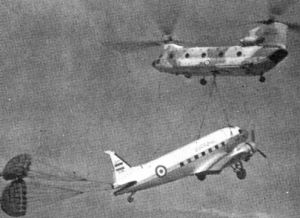
Weirdos: 
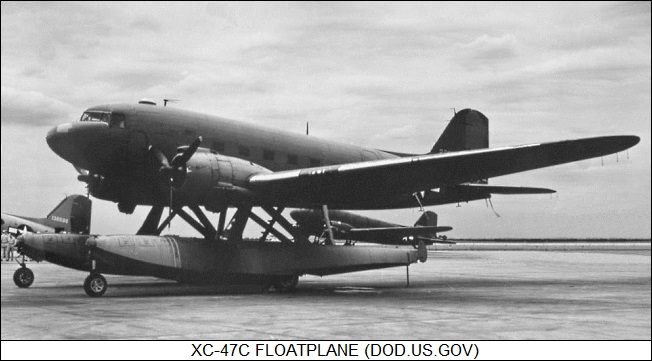
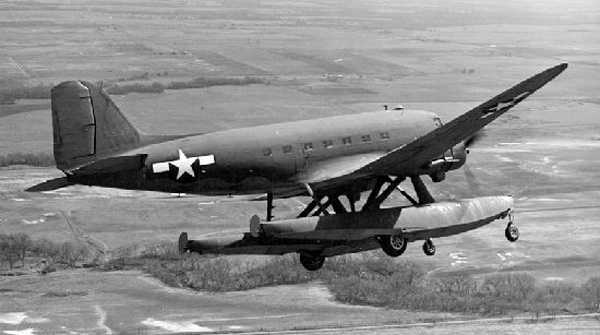
Video report, North Dakota Air National Guard’s first disaster relief mission (Operation Haylift), during the winter of 1949:
Video report; C-47 Operation Market Garden:
Jungle Skippers’ “Cleo C”, Dyess Air Force Base, Texas: 
Flak damage to a Jungle Skippers C-47, Corregidor Island, Philippines, World War Two (1943?): 

2018 video explainer of the inception of the 349th Troop Carrier Group in 1943:
HARVEY: C-A-F DELIVERS AID WITH WORLD WAR 2 AIRCRAFT (Unfortunately this restored C-47 crashed and burned not even a year after taking part in Hurricane Harvey relief ops)
Popular Mechanics explains “Why the DC-3 Is Such a Badass Plane”
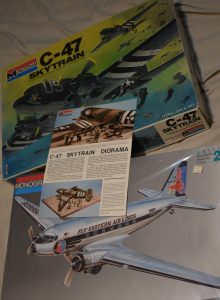
To make an Iran Air ‘DC-3’ use the C-47 fuselage with the DC-3 interior. Iranian airliners were converted C-47s and retained the cargo doors.
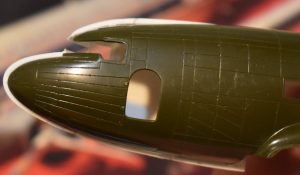
The Italeri kit is larger and its fuselage has an oval or egg shape to the cross section. The ESCI kit looks like a down-scaled version of the 1:48 Monogram kit, with recessed panel lines instead of raised surface details. The now out of production ESCI kit is the better kit.
Incomplete model kit supply list: 














Decals; facebook.com/pointerdog7/
VEHICLE I-D: ZOMBIE TANK T-55, THEY’RE EVERYWHERE!
VEHICLE I-D: NORMANDY PAINTED C-130 HERCULES
VEHICLE I-D: M4 SHERMAN (including my grandfather’s Sherman)
1:72 F-100 SUPER SABER KIT KLASH, OR MORE REASONS WHY YOU CAN’T TRUST SCALE DRAWINGS
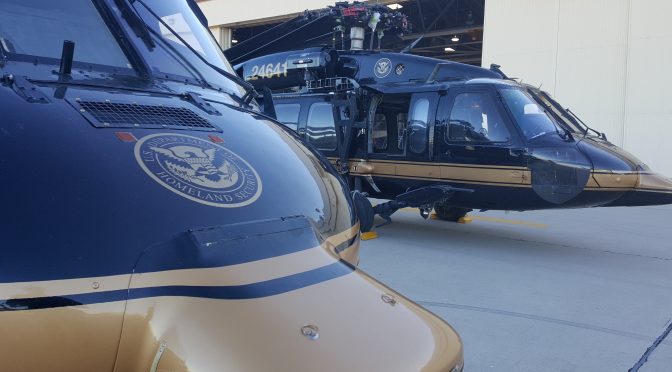
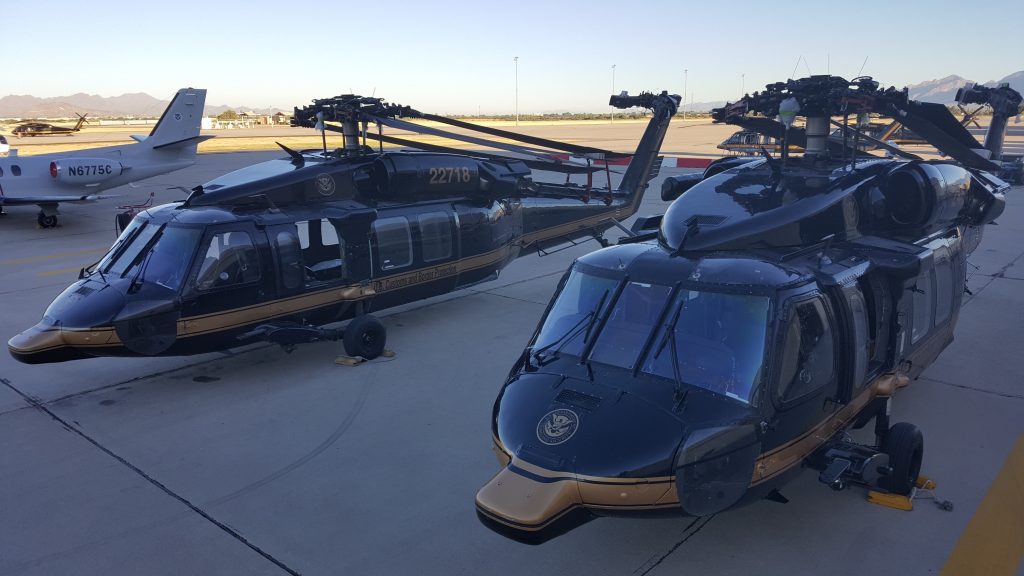
In Arizona, awaiting night time load-up into C-5 Galaxy, destine for Puerto Rico. Photo via U.S. Customs and Border Protection, 01OCT2017.
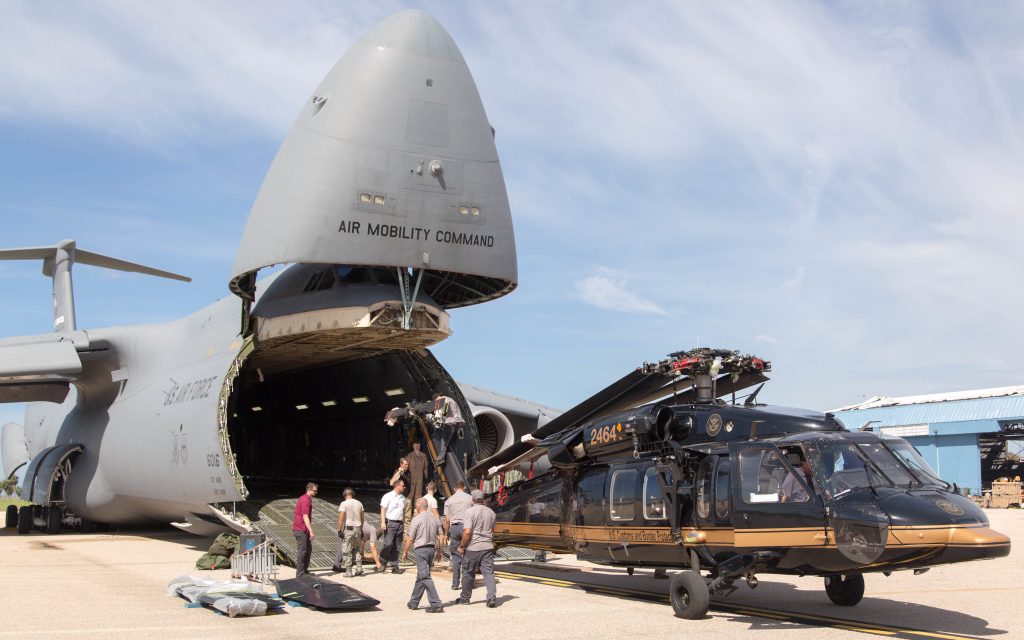
C-5 delivers the CBP UH-60s to Puerto Rico. Photo via U.S. Customs and Border Protection, 02OCT2017.
Minicraft first issued its 1:48 scale UH-60 kits in 1986. In 2001, Minicraft re-boxed it as a U.S. Customs Black Hawk. The box art, and even photos of completed kit on the sides of the box, depict it with a FLIR pod under the chin, but no such animal can be found on the sprues. All you get is a crappy looking search light. I’ll have to scratch build the FLIR, or steal it from a different helicopter kit. Many of the Customs Black Hawks have the bent tip rotary wings, the Minicraft kit still has the straight blades from the 1980s. The Minicraft markings are for U.S. Customs, which ceased to exist as an independent agency in 2003, merged with U.S. Border Patrol, and parts of Immigration and Naturalization Service, becoming today’s U.S. Customs and Border Protection (CBP). As you can see from the photos above, the CBP markings are slightly different from the old U.S. Customs markings, and today’s Black Hawk has an extended nose for housing the FLIR (Forward Looking Infra-Red) as well as mounts on the side of the cockpit for other electronic gadgets.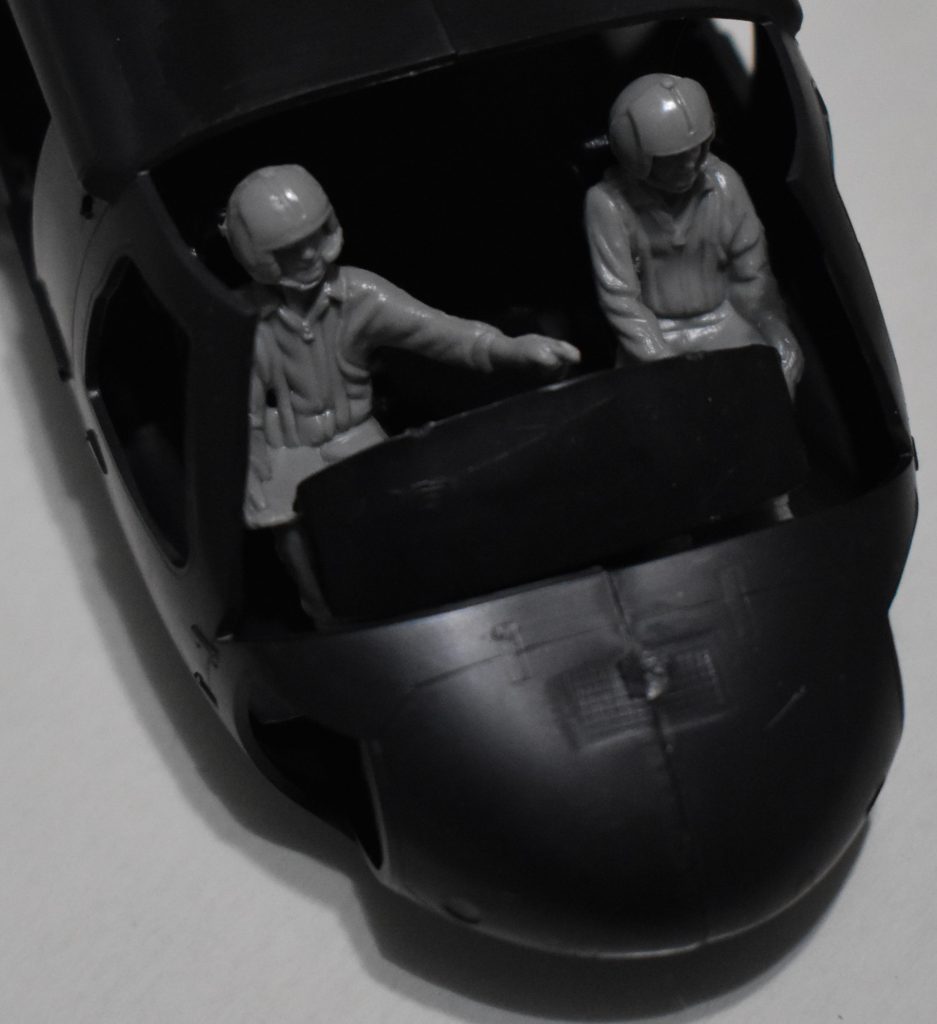 The interior of the Minicraft UH-60 is devoid of details, but can be expeditiously improved using the old-but-gold Monogram crew figures from the still viable Monogram UH-1 Huey (interesting that the Monogram ‘copter first issued in 1959 is more detailed than the Minicraft ‘copter first issued in 1986).
The interior of the Minicraft UH-60 is devoid of details, but can be expeditiously improved using the old-but-gold Monogram crew figures from the still viable Monogram UH-1 Huey (interesting that the Monogram ‘copter first issued in 1959 is more detailed than the Minicraft ‘copter first issued in 1986).
PJ Production also has a new resin set of 1:48 U.S. helicopter crew figures, although they’re sold as Vietnam era crew figures I think they could be used for late Cold War Black Hawks.
IDAHO BLACK HAWKS HEAD SOUTH, DOWN CENTRAL AMERICA WAY, YOU PAID FOR IT!
VEHICLE I-D: BLACK HAWK WITH SKIS
RF-84F THUNDERFLASH & YRF-84F, AN APPEAL TO MONOGRAM!

174th Tactical Reconnaissance Squadron, Iowa Air Guard, Sioux City Sue RF-84F, photo taken in 1960, aircraft retired 1961.
Sioux City Sue, 2013
The secret hi-tech for 1960s aerial-recon; big lens, big negatives. The RF-84F also used a three camera system called Tri-Metrogon, to take horizon-to-horizon photos.
Official video report about the history of the RF-84 and the restoration of Iowa Air Guard gate guard Sioux City Sue:
The large ‘screen’ at top center of the instrument panel is not for radar, it’s the pilot’s aiming view-port for the camera.
Before the unit got the proper equipment for developing the massive negatives, they had to drape them over chairs to dry them.
And now for something different, how about the YRF-84F? 51-1828 — NACA tail number 154. Only one built. NACA High-Speed Flight Research Station used the aircraft from 1954 until 1955.
Model Kit Round-Up: 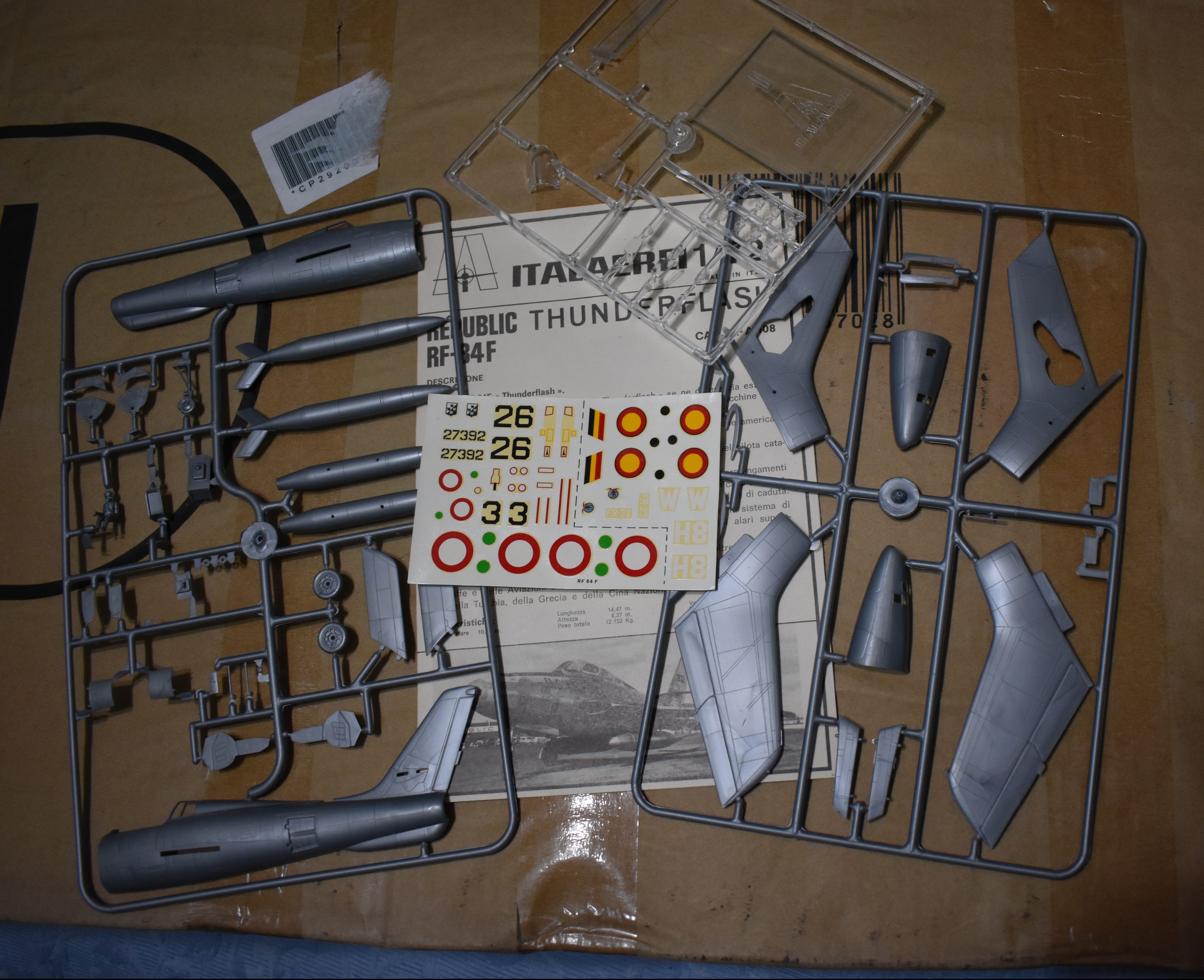 Italeri’s RF-84F was the first in 1:72 scale, first released in 1974 (according to ScaleMates). It’s also been issued by Revell-Germany and Testors. It’s a modification of their F-84F kit. It’s very basic, no interior details, surface details are raised. Reviewers say it has shape problems. With patient searching it can be had as a pre-owned kit for as little as five bucks (not including shipping), yet for some reason most internet sellers expect at least $20 and as much as $40 (outrageous).
Italeri’s RF-84F was the first in 1:72 scale, first released in 1974 (according to ScaleMates). It’s also been issued by Revell-Germany and Testors. It’s a modification of their F-84F kit. It’s very basic, no interior details, surface details are raised. Reviewers say it has shape problems. With patient searching it can be had as a pre-owned kit for as little as five bucks (not including shipping), yet for some reason most internet sellers expect at least $20 and as much as $40 (outrageous).
 Another RF-84F in 1:72 scale is the PJ Production multi-media kit, in resin, PE, metal and vacform plastic. It is highly accurate and detailed. Reviewers report it is not for beginners and requires a lot of dry fitting to reveal the difficult areas of assembly. The kit has been around for at least a decade, yet PJ Production website still lists it as a “new product”. It lists for 41.50 Euros (about $50 to $60 USD depending on the exchange rate).
Another RF-84F in 1:72 scale is the PJ Production multi-media kit, in resin, PE, metal and vacform plastic. It is highly accurate and detailed. Reviewers report it is not for beginners and requires a lot of dry fitting to reveal the difficult areas of assembly. The kit has been around for at least a decade, yet PJ Production website still lists it as a “new product”. It lists for 41.50 Euros (about $50 to $60 USD depending on the exchange rate).
PJ PRODUCTION HAS NEW STUFF FOR 2014!
 Almost forgot that in 2018 Sword issued their RF-84F. The quality of the parts is typical of Sword kits. Issued in two boxings with four different markings per box. Initial reviews are good. In the United States the price ranges from $20 to $32, and they’re selling fast.
Almost forgot that in 2018 Sword issued their RF-84F. The quality of the parts is typical of Sword kits. Issued in two boxings with four different markings per box. Initial reviews are good. In the United States the price ranges from $20 to $32, and they’re selling fast.
 For decades the only 1:48 scale RF-84F was the not so good Heller kit. Apparently first released in 1979-80 along with its F-84F Thunderstreak. About four years later Monogram released its way better F-84F, but for some reason decided not to do a much needed RF version. The Heller kit is as basic as the 1:72 scale Italeri kit, it’s been re-issued continuously and the U.S. price for previously owned kits averages $20, while the latest new issues are going for as much as $40 (outrageous given its age and lack of quality).
For decades the only 1:48 scale RF-84F was the not so good Heller kit. Apparently first released in 1979-80 along with its F-84F Thunderstreak. About four years later Monogram released its way better F-84F, but for some reason decided not to do a much needed RF version. The Heller kit is as basic as the 1:72 scale Italeri kit, it’s been re-issued continuously and the U.S. price for previously owned kits averages $20, while the latest new issues are going for as much as $40 (outrageous given its age and lack of quality).
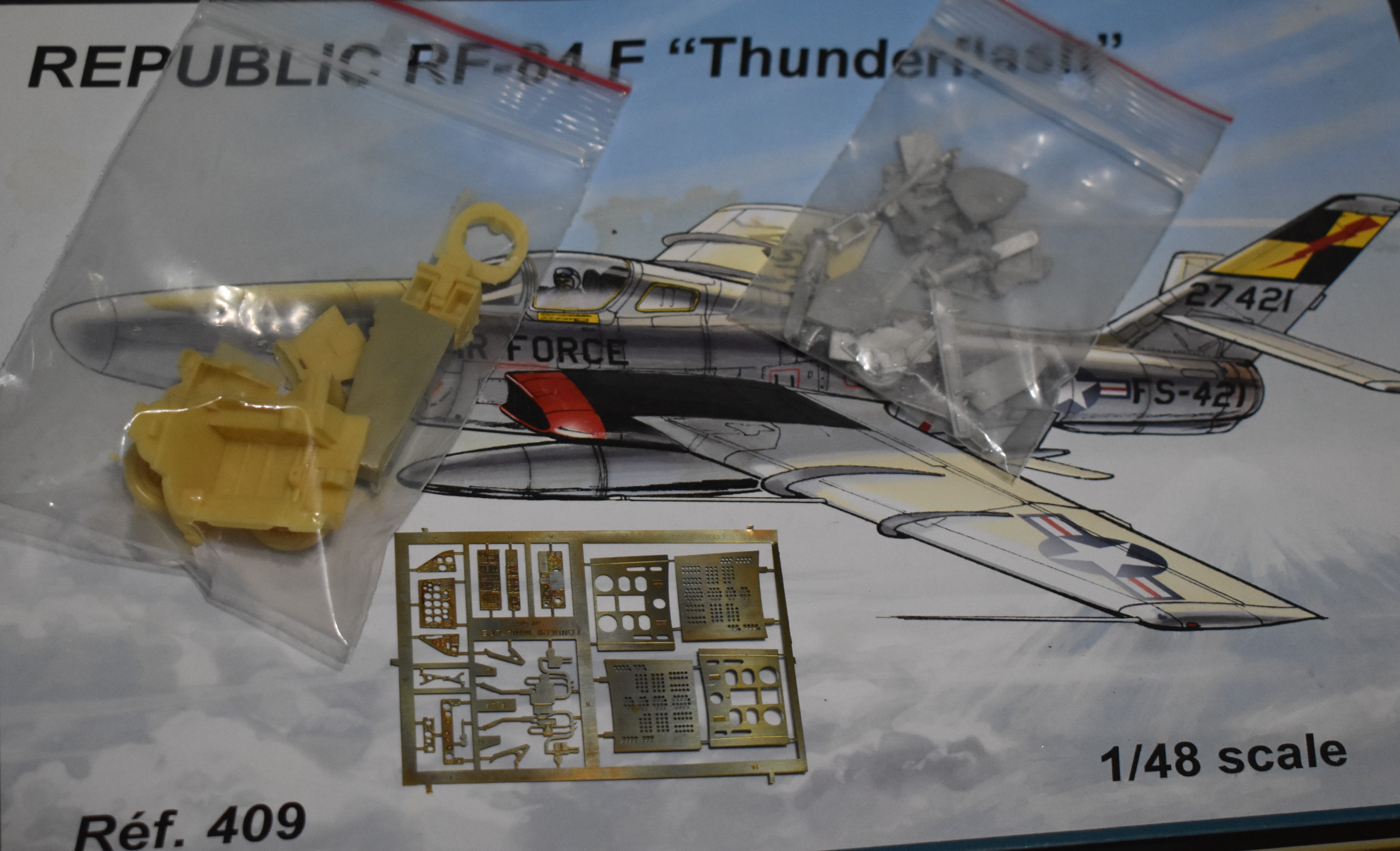 About 15 to 20 years ago Foundier Miniature (FM) tried to improve the Heller kit by adding resin parts for the cockpit, metal parts for the landing gears, and PE parts for things like the speed brakes/spoilers. It was issued under their Xkit label. Beware, the kit I bought (second hand) has massive warp-age of the Heller parts.
About 15 to 20 years ago Foundier Miniature (FM) tried to improve the Heller kit by adding resin parts for the cockpit, metal parts for the landing gears, and PE parts for things like the speed brakes/spoilers. It was issued under their Xkit label. Beware, the kit I bought (second hand) has massive warp-age of the Heller parts.
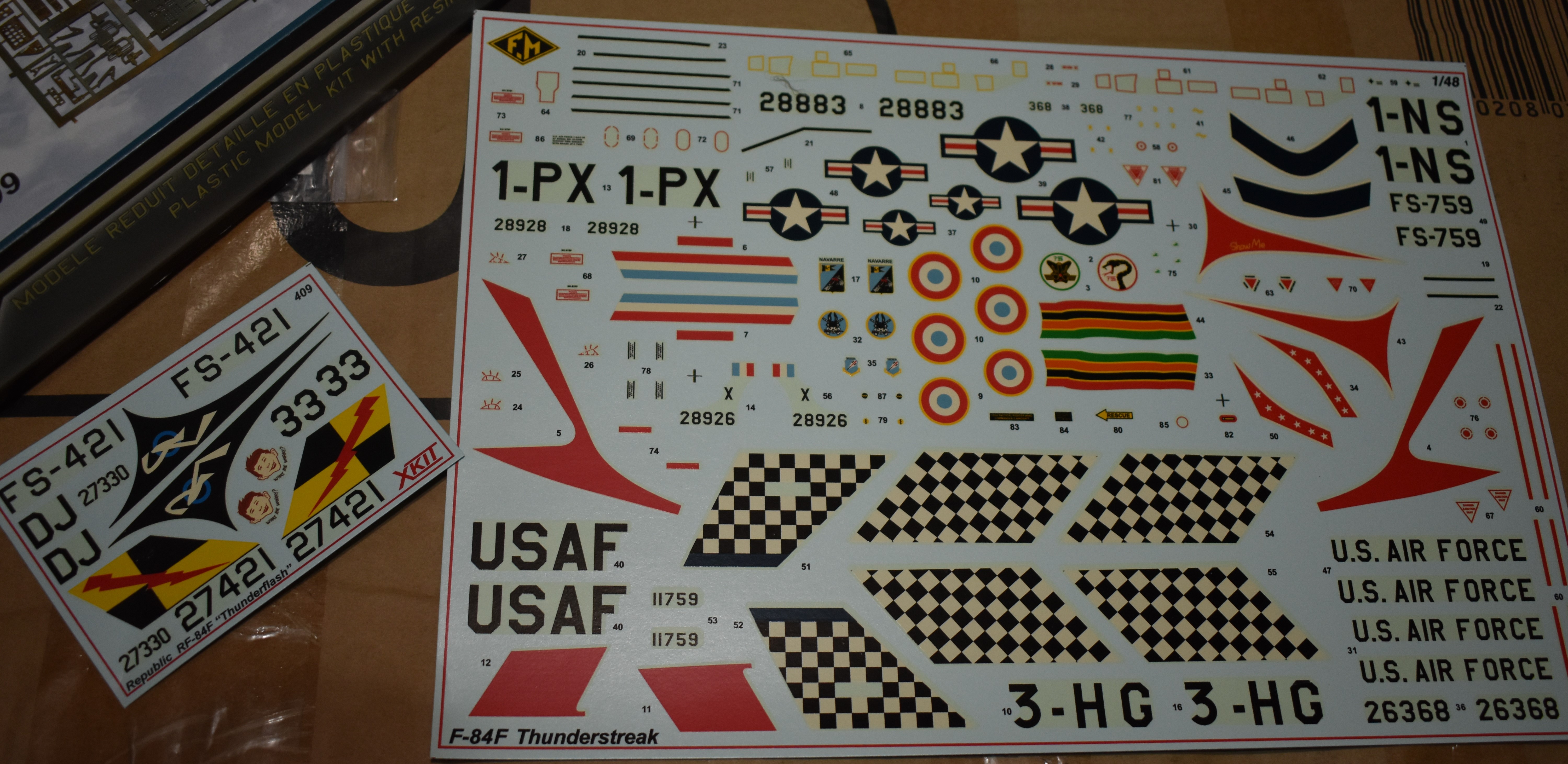 It also has a massive decal sheet marked F-84F, and a tiny sheet marked RF-84F. The large sheet is from FM’s F-84F issue, but you’re meant to use the national insignia on that sheet for the RF-84F. The instructions are modified Heller instructions with additions to show the usage of the FM detail parts.
It also has a massive decal sheet marked F-84F, and a tiny sheet marked RF-84F. The large sheet is from FM’s F-84F issue, but you’re meant to use the national insignia on that sheet for the RF-84F. The instructions are modified Heller instructions with additions to show the usage of the FM detail parts.
 And now for something really outrageous. Recently a Japanese company called Tanmodel issued the newest 1:48 scale RF-84F. You’d think it was the best damn thing in the world going by how much sellers are asking for it. An internet review said it was better than the ancient Heller kit, but the recessed surface detailing is not much better than Monogram’s raised detailing. In fact the reviewer said the recessed rivets (which there are no such thing on real airplanes) look more like 1:32 scale rivets, the pics of the completed kit makes it look like the trench-n-divet surface details are raised because they’re so over-scale. You get air intake ducting and an exhaust pipe. You also get a detailed camera bay, which is pointless because the fuselage is not molded so that you can poise the access door in the open position (you could do surgery). The ultimate reason this kit is so outrageous is its asking price, I’ve seen prices ranging between $70 and $180!!!
And now for something really outrageous. Recently a Japanese company called Tanmodel issued the newest 1:48 scale RF-84F. You’d think it was the best damn thing in the world going by how much sellers are asking for it. An internet review said it was better than the ancient Heller kit, but the recessed surface detailing is not much better than Monogram’s raised detailing. In fact the reviewer said the recessed rivets (which there are no such thing on real airplanes) look more like 1:32 scale rivets, the pics of the completed kit makes it look like the trench-n-divet surface details are raised because they’re so over-scale. You get air intake ducting and an exhaust pipe. You also get a detailed camera bay, which is pointless because the fuselage is not molded so that you can poise the access door in the open position (you could do surgery). The ultimate reason this kit is so outrageous is its asking price, I’ve seen prices ranging between $70 and $180!!!
In 1:32 scale there was the I.D. Models vac-formed kit, released in the 1990s. It was basic, no detailing, only the main fuselage and wings, canopy, external tanks, nothing else. Starting in 2014 there were rumors that Kitty Hawk was going to issue a 1:32 RF-84F. The rumors got a lot of people excited, so far nothing has materialized.
Everybody needs to contact the neue Eigentümer der Monogram and demand they make a 1:48 scale RF-84F!
For now (meaning whenever I get a round to it) I’m going to attempt to mate the nose and main wings of my warped Heller-FM RF-84F to one of the many Monogram F-84Fs in my stash. (somebody attempted it using a Kinetic/Italeri kit)
Vehicle I-D: TIME TO SEE THE ‘DOC’ (B-29)
RETIRED USN CRAFTSMAN RECALLS DAYS OF BEING PAID TO BUILD GIANT MODEL PLANES!
SUPER GUPPY BE OLD, BUT NASA STILL USES IT!